As it is in literature, mythology, nature and superstition, the number three often plays a significant role in music. Throughout the years, a number of significant artists have released—intentional or coincidental—album trilogies, tied together by design or by circumstance. Some of them are snapshots of a moment in time. Others are planned multi-album conceptual works. Some are bound by collaborators, studios, labels or other details. Whatever the connective thread, these 33 examples of album triptychs finds that three really is the magic number. Take a look at our list of Essential Album Trilogies below.
Note: This list originally was published in 2017. It has been updated and expanded in 2024.
When you buy something through our affiliate links, Treble receives a commission. All albums we cover are chosen by our editors and contributors.
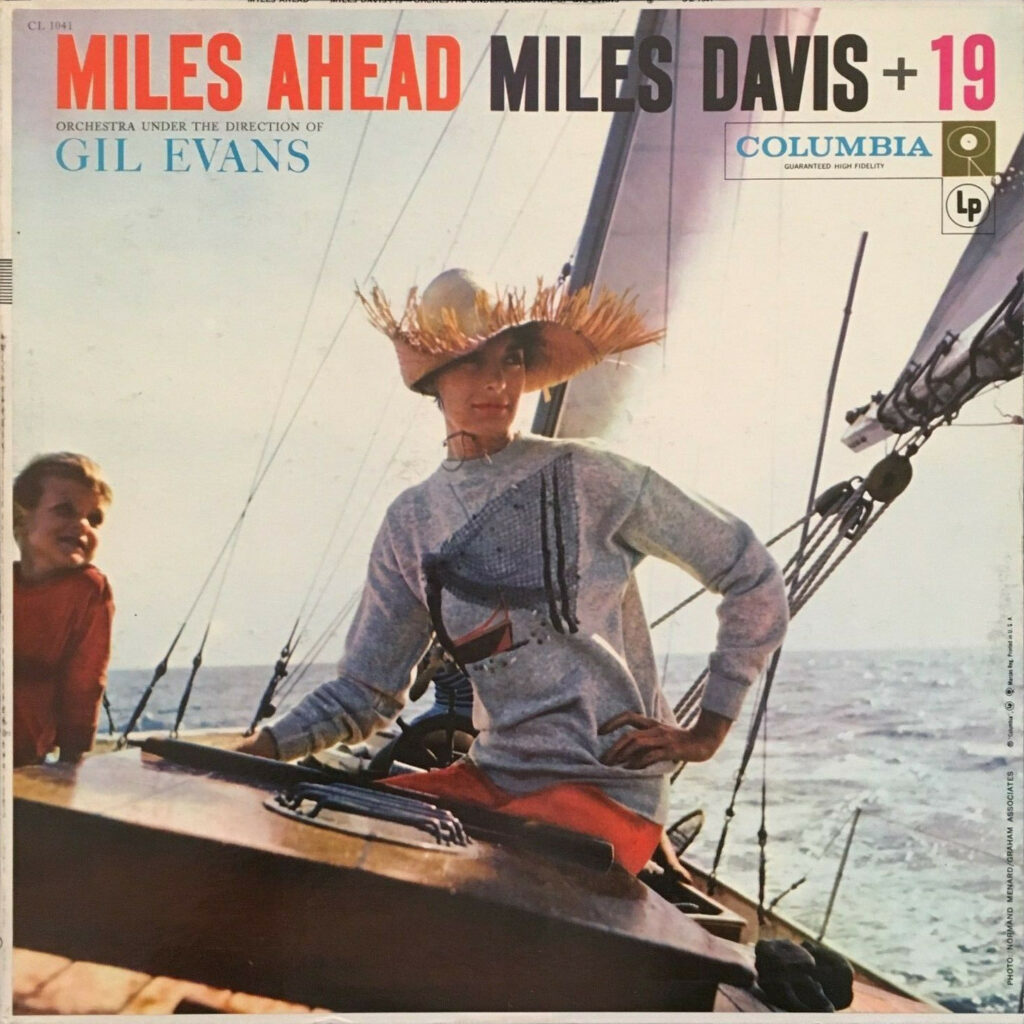


Miles Davis – Gil Evans Trilogy
Miles Ahead (1957), Porgy and Bess (1959), Sketches of Spain (1960)
Miles Davis collaborated with arranger Gil Evans at various times throughout his career, expanding his early cool jazz and hard bop sounds in the 1950s with richer orchestrations and more elaborate productions. In fact, they actually worked together on more than three albums; Evans arranged a handful of songs on his 1957 compilation Birth of the Cool, did some uncredited work on 1969’s Filles de Kilimanjaro, and Davis’ 1963 album Quiet Nights was the last of the two artists’ full-length collabs, though at under 30 minutes long, it’s essentially an unfinished work, released as-is despite being seen as a failure by its creators. That said, the three full-length albums they crafted together on Columbia Records between 1957 and 1960 represent some of the most awe-inspiring fusions of jazz and classical orchestration of the era. Where Miles Ahead showcased some of the boldest new sounds in Davis’ musical direction of the time, Porgy and Bess found the two artists crafting stunning reinterpretations of Gershwin’s famed musical, and Sketches of Spain—even more than 60 years later—remains a pinnacle of third-stream jazz. – Jeff Terich
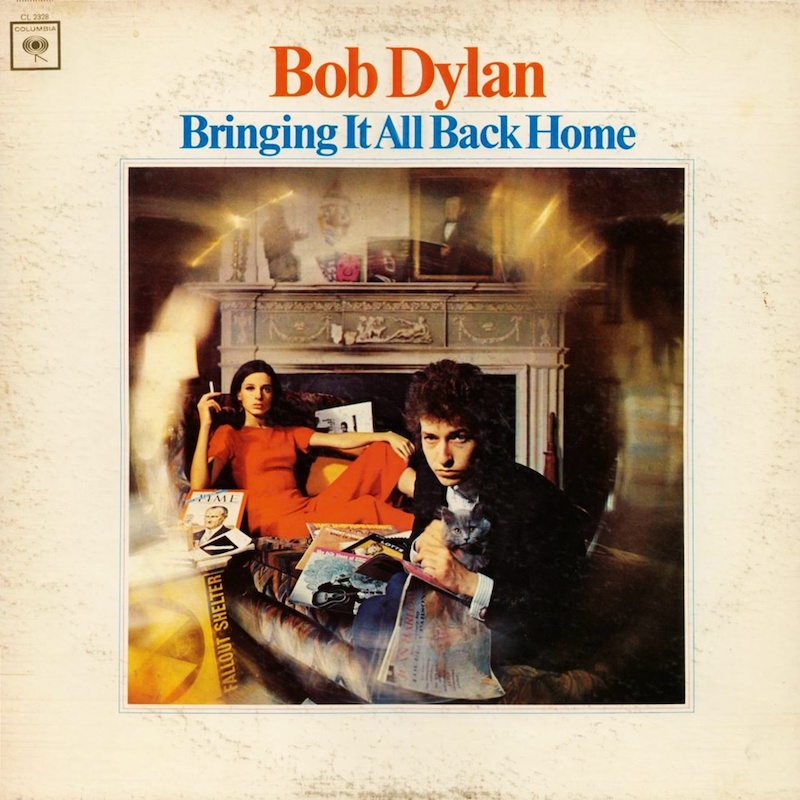


Bob Dylan – ’65-66
Bringing It All Back Home (1965), Highway 61 Revisited (1965), Blonde on Blonde (1966)
Broadly speaking, there aren’t many sequential three album runs that outdo the trio of albums that Bob Dylan released within a concentrated 14-month period in the mid-’60s. Despite the cries of “Judas” at his electrified (and “fucking loud”) performance at Manchester’s Free Trade Hall, the release of 1965’s Bringing It All Back Home elevated his music to a new level, splitting its two sides in half between rowdy, bluesy rockers and some of his most brilliantly poignant acoustic songs. With that same year’s Highway 61 Revisited, Dylan essentially cast folk by the wayside in an embrace of rock music rich in allegory and Al Kooper’s organ, and in 1966 he went for broke with the double-album Blonde on Blonde, which to date had been one of the longest rock albums ever released. All three, more than 50 years after the fact, represent some of Dylan’s greatest material as well as simply some of the greatest albums in rock ‘n’ roll history. – Jeff Terich
Listen/Buy: Spotify | Rough Trade (vinyl)
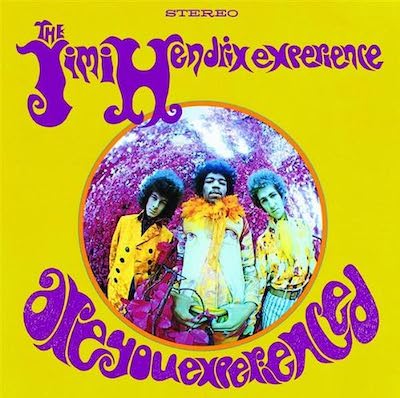
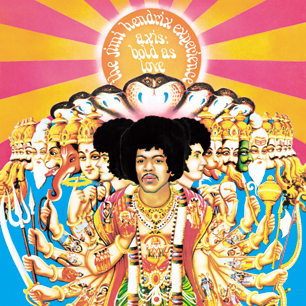
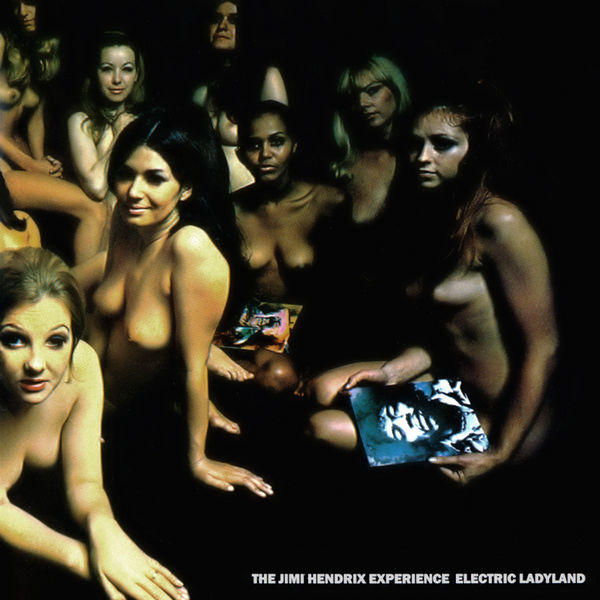
The Jimi Hendrix Experience – Complete Discography
Are You Experienced? (1967), Axis: Bold As Love (1967), Electric Ladyland (1968)
In the 50-plus years since Jimi Hendrix’s untimely death, countless collections of unreleased recordings have been unearthed, overturning every last stone in his archive—more live albums continue to surface to this day, including 2020’s excellent Live in Maui. Strictly speaking, though, The Jimi Hendrix Experience—comprising Hendrix, bassist Noel Redding and Mitch Mitchell—released only three albums. And considering they’re all rock ‘n’ roll essentials, you can go ahead and mark that as a necessary trilogy. Much like Dylan’s fabled three-album run, Hendrix and company’s were released in a span of a little over a year, first with 1967’s Are You Experienced?, followed shortly thereafter with Axis: Bold As Love that same year, and then wrapping up with the epic double-album sprawl of Electric Ladyland. The group split up just a little over a year before Hendrix’s death, but while their time together was brief, the impact they left is immeasurable. – Jeff Terich
Listen/Buy: Spotify | Amazon (vinyl)
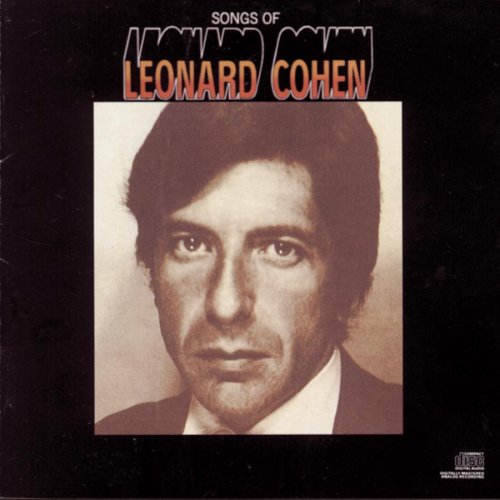
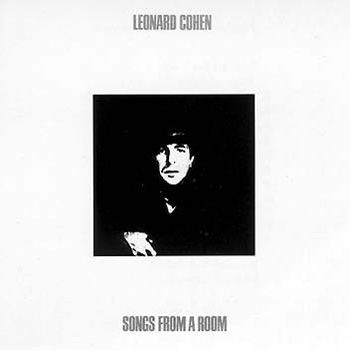

Leonard Cohen – “Songs” Trilogy
Songs of Leonard Cohen (1967), Songs from a Room (1969), Songs of Love and Hate (1971)
Leonard Cohen rarely opted for elaborate titles of his works when something more straightforward would do: Recent Songs, Ten New Songs, Old Ideas. After all, a symmetrical naming convention worked perfectly well for his opening trio of albums, which each stand among his most celebrated works. Songs of Leonard Cohen began the Canadian artist’s career with a selection of beautifully stark folk songs characterized by their simple arrangements and lyrical poetry. He built on that foundation with a solid follow-up, Songs from a Room, featuring songs such as “Bird on a Wire” and his interpretation of ‘40s era chanson ballad “The Partisan,” and in 1971 delivered the coup de grace with Songs of Love and Hate, arguably his greatest and most devastating album, opening with the menacing “Avalanche,” diving into the depths of despair in “Dress Rehearsal Rag” and offering bittersweet reflections in “Famous Blue Raincoat.” In the years that followed his approach and sound evolved, but these three Songs albums—each released two years apart—showcased the unimpeachable first chapter of a stunning career. – Jeff Terich
Listen/Buy: Spotify | Amazon (vinyl)

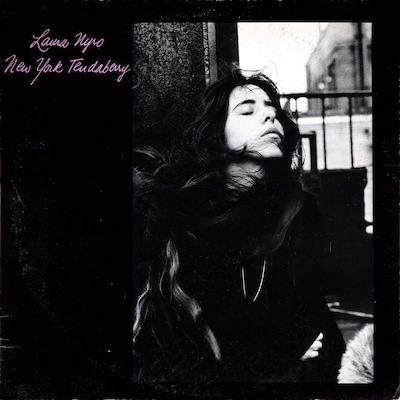

Laura Nyro Trilogy
Eli and the Thirteenth Confession (1968), New York Tendaberry (1969), Christmas and the Beads of Sweat (1970)
Singer/songwriter Laura Nyro left an indelible impact on popular music in myriad ways, influencing artists such as Joni Mitchell, Elton John and Todd Rundgren; working alongside Miles Davis and Alice Coltrane; and producing hits for the likes of Bette Midler, The 5th Dimension, and Blood, Sweat and Tears. Despite her unusual knack for writing hit songs, however, her musical style was intricate and progressive, groundbreaking and unique. Though she wrote and recorded music up through the mid-’90s, before her death of cancer in 1997, the works often cited as her greatest were released between 1968 and 1970. An unofficial trilogy of albums rather than one interconnected by design, the sequence of Eli and the Thirteenth Confession, New York Tendaberry, and Christmas and the Beads of Sweat showcase the breadth and depth of Nyro’s artistry, her breathtaking range and idiosyncrasies. She veers between stark balladry and jazz-inflected pop, and on the third installment in the series, richly arranged soul backed by the Muscle Shoals Rhythm Section. Alternately revered and misunderstood, Nyro nonetheless left a mesmerizing body of work with three masterpieces at the center. – Jeff Terich
Listen/Buy: Spotify | Amazon (vinyl)



Nick Drake – Complete Discography
Five Leaves Left (1969), Bryter Layter (1970), Pink Moon (1972)
Nick Drake released three studio albums during his brief lifetime, and while the small sample size might skew the results somewhat, the overall body of work is the rare perfect discography in popular music. The trifecta begins with the intricate folk of his debut Five Leaves Left, takes a turn toward lusher arrangements and richer sound in 1970’s Bryter Layter, and then concludes with the start yet stunning conclusion of 1972’s Pink Moon. Each album is rife with Drake’s intricate, finger-picked guitar style and haunting lyricism, sometimes featuring backing from members of Fairport Convention, though the withdrawn and reclusive artist rarely performed live and retreated from the spotlight after his third album, dying far too early at the age of 26 in 1974. In the years since, collections of previously unreleased recordings have since been made public, which contain treasures of their own, but the original trio of albums remains a triptych of some of the greatest rock and folk recordings of all time. – JT
Listen/Buy: Spotify | Rough Trade (vinyl)

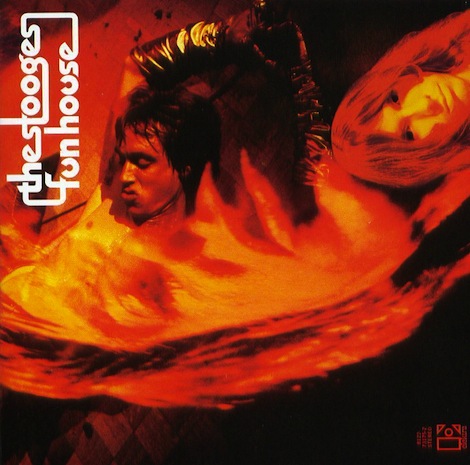

The Stooges – The First Three Albums
The Stooges (1969), Fun House (1970), Raw Power (1973)
Prior to 2007, The Stooges’ complete catalog comprised a trilogy of perfect or damn-close proto-punk records that helped usher in a revolutionary sound—whether or not anyone realized it at the time; much like the Velvet Underground, the group’s legacy far eclipsed the size of their audience during their short run together. Then they reformed for the lackluster The Wilderness, followed by one more record credited to “Iggy and the Stooges,” which combined essentially make up the work of an entirely different permutation of the band, despite featuring most of the original members. But despite the effort, the group couldn’t quite capture the rawness of their self-titled debut, the chaotic thrills of 1970’s Fun House, or the incendiary explosion of 1973’s Raw Power. And after all, how could they? You can’t improve on moments of rock ‘n’ roll inspiration like these. – JT
Listen/Buy: Spotify | Rough Trade (vinyl)


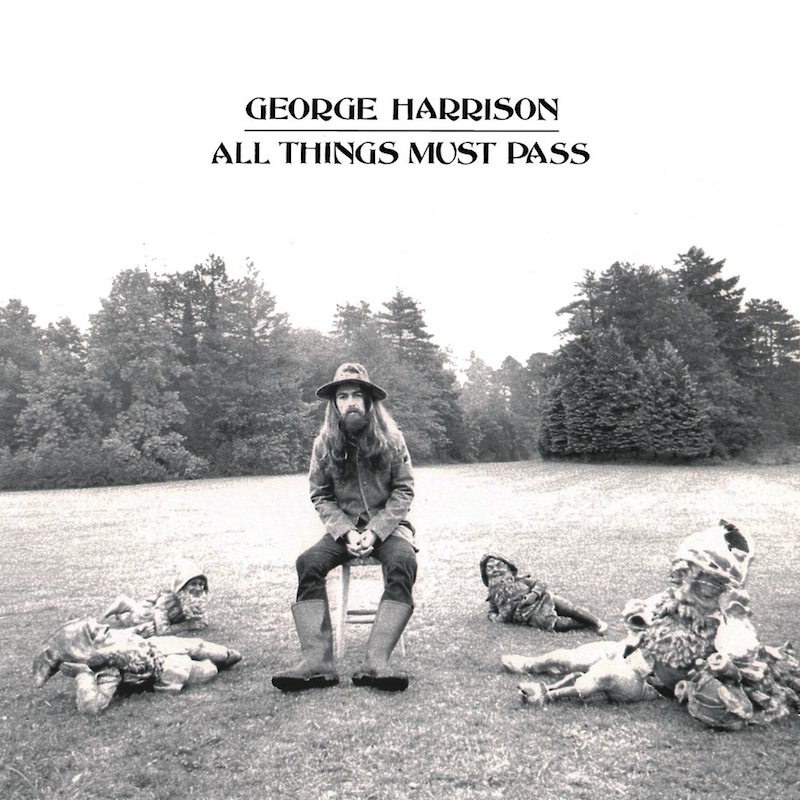
The Beatles Solo Trilogy
McCartney (1970), Plastic Ono Band (1970), All Things Must Pass (1970)
In 1970, the same year that The Beatles closed out their legacy with Let It Be, released a month after their public dissolution, all four members released solo albums. In fact, Ringo Starr released two, though because they leaned heavy on covers or genre exercises, they’re not included here (sorry, Ringo! If only Ringo arrived three years earlier…). However, Paul McCartney, George Harrison and John Lennon each delivered defining statements in 1970 that showcased their individual strengths outside the context of their bigger-than-Jesus band. McCartney’s McCartney is perhaps not regarded quite as highly as 1971’s Ram, though with its standout moments like “Maybe I’m Amazed,” one of his all-time great compositions, its 33 minutes are consistently strong and reveal promise for a long solo (and Wings) career in the making. Meanwhile, John Lennon tapped into personal trauma for the deeply personal Plastic Ono Band, and Harrison went for broke with the triple-album All Things Must Pass, exploring spirituality and introspection within some stunning pop songs. It’s worth noting that only McCartney is technically a debut; Harrison recorded a film score and an experimental Moog album, and Lennon made three experimental records with Yoko Ono. But these details hardly matter in the context of three classic albums that began a series of new chapters. – Jeff Terich
Listen/Buy: Spotify | Amazon (vinyl)



Can – The Damo Suzuki Years
Tago Mago (1971), Ege Bamyasi (1972), Future Days (1973)
German art-rock legends Can made their debut with 1969’s Monster Movie, an album that featured Malcolm Mooney on vocals. But Mooney departed the group shortly thereafter, appearing on only two songs on their sophomore release Soundtracks, a compilation of songs written and recorded for films that also included instrumentals and a handful of tracks with Damo Suzuki, a Japanese busker who joined the group after Can’s Holger Czukay and Jaki Liebezeit saw him performing in Germany. Suzuki’s addition to the group and dynamic vocal presence provided the catalyst for a fertile creative period that saw them creating their three most celebrated albums: 1971’s epic and abstract Tago Mago, 1972’s accessible and groove-driven Ege Bamyasi, and 1973’s mesmerizing Future Days. Suzuki’s tenure in the group lasted only three brief years, and the group continued on through the end of the decade, but they never reached a peak as high as those three albums again. – Jeff Terich
Listen/Buy: Spotify | Rough Trade (vinyl)


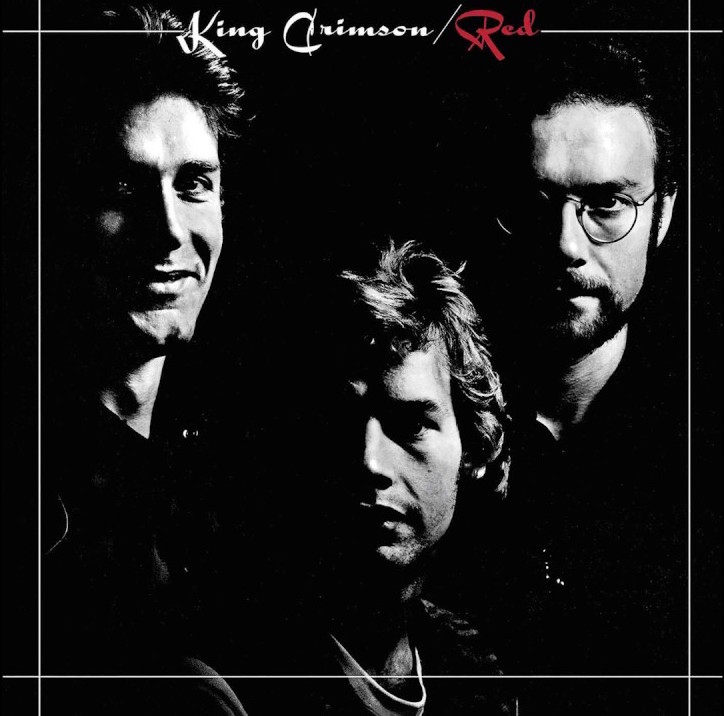
King Crimson – The Wetton Trilogy
Larks’ Tongues in Aspic (1973), Starless and Bible Black (1974), Red (1974)
In their fifty-plus years of history, prog giants King Crimson underwent various periods of reshuffling and reconfiguration, initially fronted by Greg Lake and leaning heavier on ornate ballads, later on in the ‘80s delving into new wave textures with Adrian Belew, and then tapping into industrial rock in the ‘90s. Guitarist Robert Fripp is the common link in various phases of the group, but one of the most thrilling eras in their history surrounds three albums in the 1970s, in which bassist John Wetton took over on lead vocals. The three records released during that brief three-year period—Larks’ Tongues In Aspic, Starless and Bible Black, and Red—comprise an era of both dazzling musicianship and unbridled menace, drawing as much from jazz as they did even heavier sounds, creating a template for avant garde metal within these three albums. The most fascinating aspect is that they seem to escalate in intensity, reaching a level of fury and intricacy on Red that would have been an awe-inspiring close to their legacy—that is, had they not reformed six years later. – JT
Listen/Buy: Spotify | Rough Trade (vinyl)
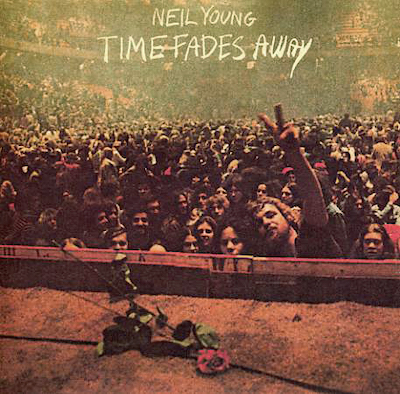

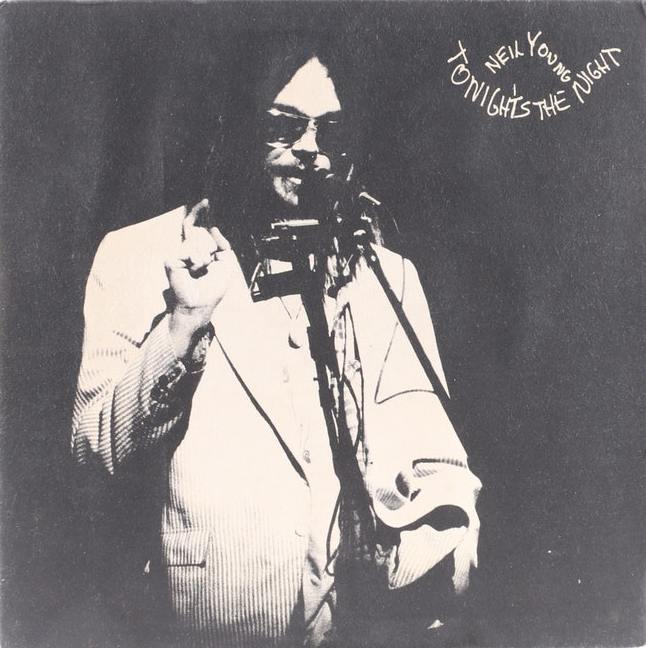
Neil Young – “Ditch” trilogy
Time Fades Away (1973), On the Beach (1974), Tonight’s the Night (1975)
Perhaps the most fabled trilogy of any on this list, Neil Young’s “Ditch” trilogy found him embracing doom, darkness and, inadvertently, commercial disappointment after the pop success of 1972’s Harvest. “’Heart of Gold’ put me in the middle of the road. Traveling there soon became a bore so I headed for the ditch,” Young wrote in the liner notes of the Decade compilation, referring to a period defined by grief over the death of former bandmate Danny Whitten. Though the resulting albums of the personal lows Young experienced between 1973 and 1975 are less polished and decidedly less commercial, artistically they found him breaking out of expected norms. The live-recorded Time Fades Away was long regarded by Young as one of his least-favorite albums he ever recorded, but the songwriting and performances are gripping, while 1974’s On the Beach is frequently cited among his best works overall, a grim but captivating set of songs that range from moodier pieces to fiery rockers. With 1975’s Tonight’s the Night, he completed the trilogy with another celebrated album that’s likewise among his heaviest thematically, dripping with pain over the deaths of two friends from heroin overdoses. It’s an intensely honest and bewildering set of albums, one that despite it all stands as some of the greatest he ever made. – JT
Listen/Buy: Tidal | Amazon (vinyl)
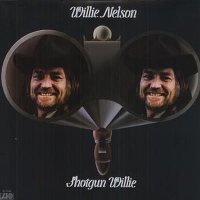


Willie Nelson – Outlaw Trilogy
Shotgun Willie (1973), Phases and Stages (1974), Red Headed Stranger (1975)
Willie Nelson has 151 albums—within a catalog that big, there are bound to be more than a few trilogies. Indeed, one of them is officially dubbed by their creator the “Trilogy of Mortality,” comprising God’s Problem Child, Last Man Standing and Ride Me Back Home. But one could arguably point to an earlier trio of records released 40 years earlier that comprise, unofficially, the first great trilogy in his catalog. With the release of 1973’s Shotgun Willie, Nelson helped to define an era of “Outlaw country,” which emphasized grittier sounds outside the polished Nashville sound as well as an emphasis on storytelling that often took form in concept-driven albums. Nelson just so happened to release two more narrative-driven albums in the next two years: 1974’s Phases and Stages, a remarkably tender and empathetic look at divorce despite its rollicking country-rock sound, and 1975’s Red Headed Stranger, which is in essence a country opera. Each one warrants an argument for being Nelson’s greatest single recordings, and all three are featured in the top five of Texas Monthly’s ranking of every Willie Nelson album. Like Dylan’s mid-’60s albums or Neil Young’s “Ditch” trilogy, it’s a sequential run of albums that represents an artist at his peak. – Jeff Terich
Listen/Buy: Spotify | Rough Trade (vinyl)

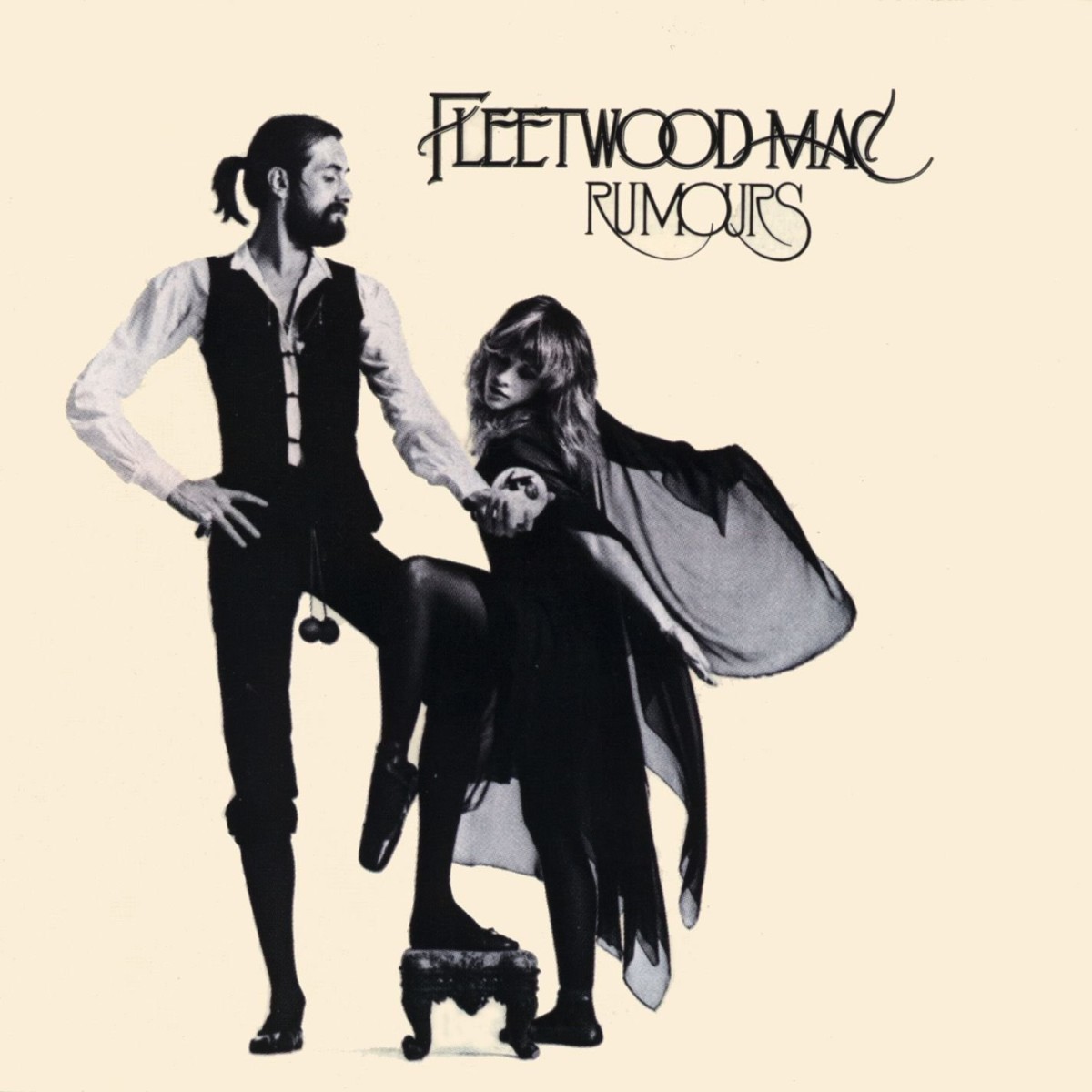

Fleetwood Mac – The Buckingham-Nicks Trilogy
Fleetwood Mac (1975), Rumours (1977), Tusk (1979)
Fleetwood Mac began life as Peter Green’s Fleetwood Mac, a blues-rock band whose heavy psych single “The Green Manalishi” became a proto-metal staple, made official with Judas Priest’s cover of the song later on in the ‘70s. But since their founding in 1967, the group’s lineup remained in constant flux, going through four vocalists in four years and on the verge of collapse by the time drummer Mick Fleetwood was introduced to the folk-rock duo Buckingham Nicks. The duo were a package deal, at least at the time, and Fleetwood invited both into the studio to record a new album, which for Fleetwood Mac meant a fresh start. The band’s 1975 self-titled album kicked off a new era for the group, one defined by a rotating lineup of vocalists—including Lindsey Buckingham, Stevie Nicks and keyboardist Christine McVie—as well as a more pop-oriented songwriting style. The album reinvigorated the group, while its drama-filled follow-up—the bajillion-selling Rumours—made them a household name as much as a soap opera. Capping the trifecta is Tusk, whose overambitious “cocaine blizzard” sessions yielded one of rock music’s most beautifully indulgent messes. – Jeff Terich
Listen/Buy: Spotify | Rough Trade (vinyl)
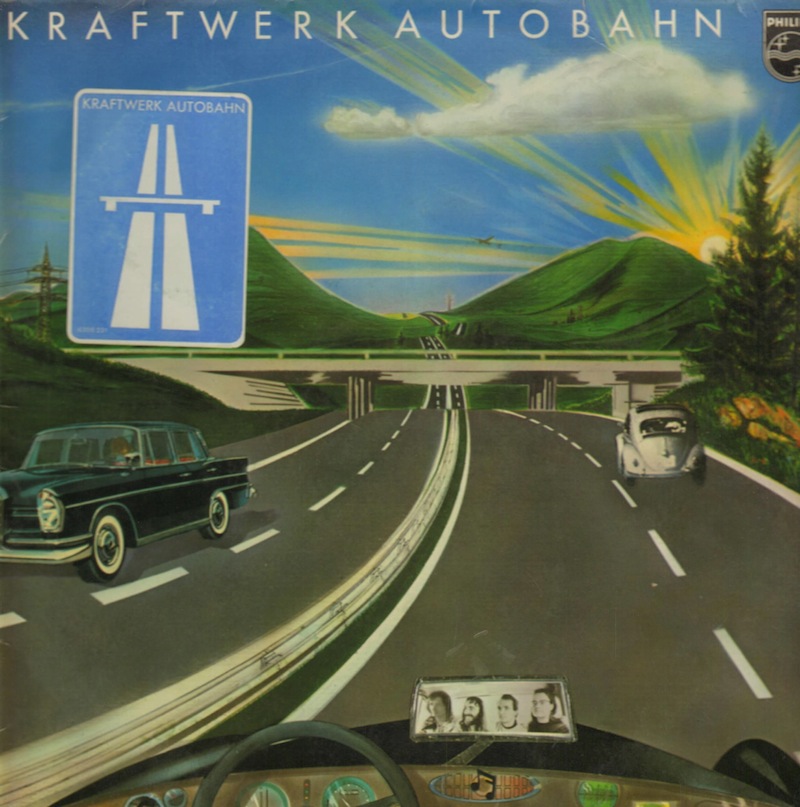
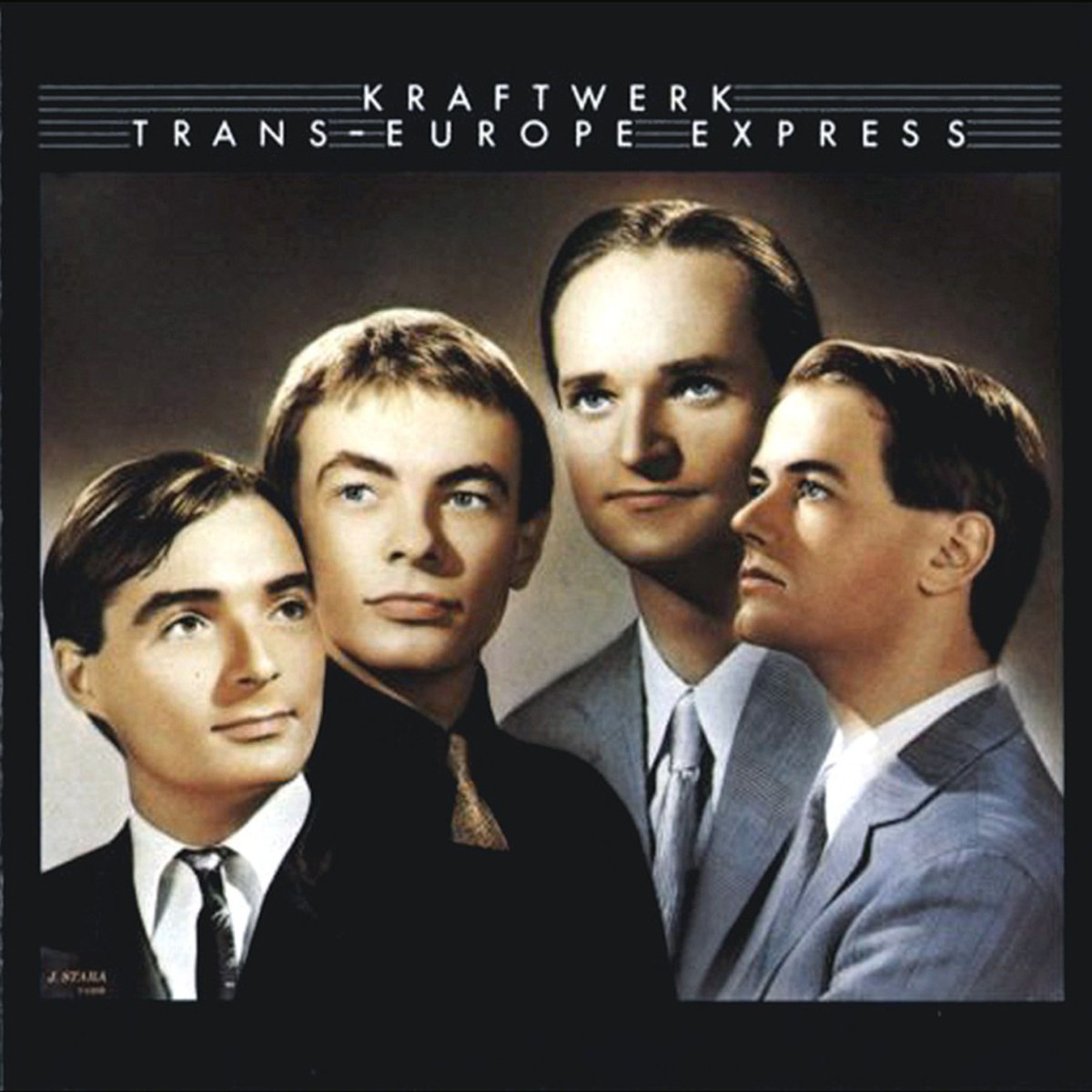
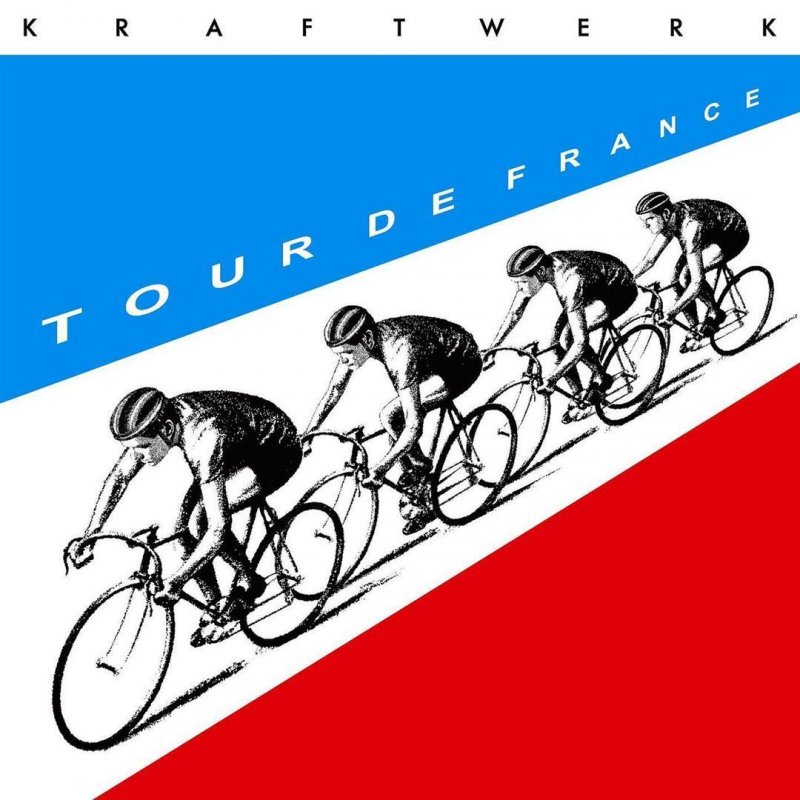
Kraftwerk – Transportation Trilogy
Autobahn (1974), Trans Europe Express (1977), Tour De France Soundtracks (2003)
If you’ll excuse the self-referential nature of this inclusion, the existence of a trilogy within Kraftwerk’s catalog (aside from their three early pre-Autobahn albums) was brought to my attention by Treble’s Adam Blyweiss, who noted the “trilogy of classic title cuts about transportation,” which in essence extends to the aesthetic threads behind those albums overall. Kraftwerk’s breakthrough album was 1974’s Autobahn, whose side-long title track is inspired by and employs the sounds of driving across Germany’s national motorway, whereas 1977’s Trans Europe Express derives its concept from european railways (and likewise features a side-long suite centered around the title track) and 2003’s Tour de France Soundtracks escapes the highway and the railway for the cyclist’s course. One could just as easily make the argument that Kraftwerk’s catalog bears a “technology” trilogy, comprising 1976’s Radio-Activity, 1978’s The Man-Machine and 1981’s Computer World—substitute those albums at your will—but a body of work inspired by advancement of human achievement, satirically or otherwise, is bound to develop a few patterns of its own. – Jeff Terich
Listen/Buy: Spotify | Rough Trade (vinyl)


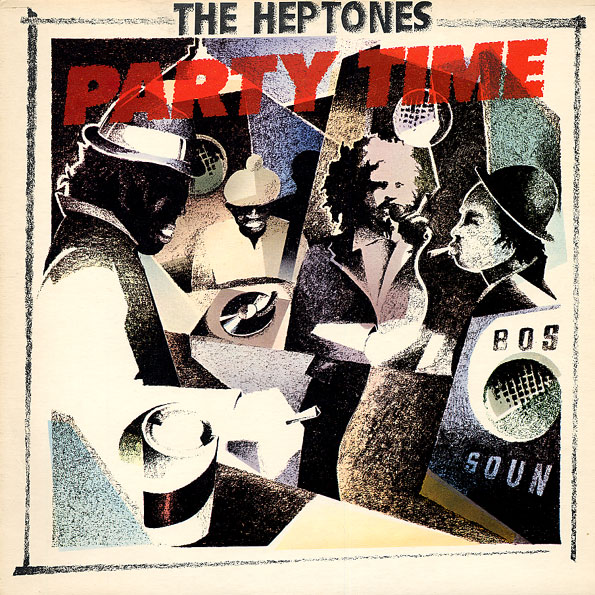
The Black Ark “Holy Trinity”
War Ina Babylon (1976), Police and Thieves (1977), Party Time (1977)
Lee “Scratch” Perry—dub innovator and prolific producer—racked up an impressive resume of recordings over the years both as featured artist and as the mad scientist behind the boards, but only three of them are officially in the “Holy Trinity” of albums recorded as his Black Ark studios in Jamaica (none of them, notably, solo Perry or Upsetters albums): Junior Murvin’s Police and Thieves, Heptones’ Party Time, and Max Romeo’s War Ina Babylon. All three reggae records were released on Island Records between 1976 and 1977, but they’re each considerably different from one another: Murvin’s is the most soulful, The Heptones’ LP arguably the most pop of the three, and Romeo’s the most urgently political. Yet all three carry the immersive, psychedelic production from Perry, which ties all three together. Congos’ Heart of the Congos isn’t part of the trilogy, despite it sometimes being mentioned in the same breath as the other three, though if you want to call it a quadrilogy, I certainly won’t stop you. – Jeff Terich
Listen: Spotify
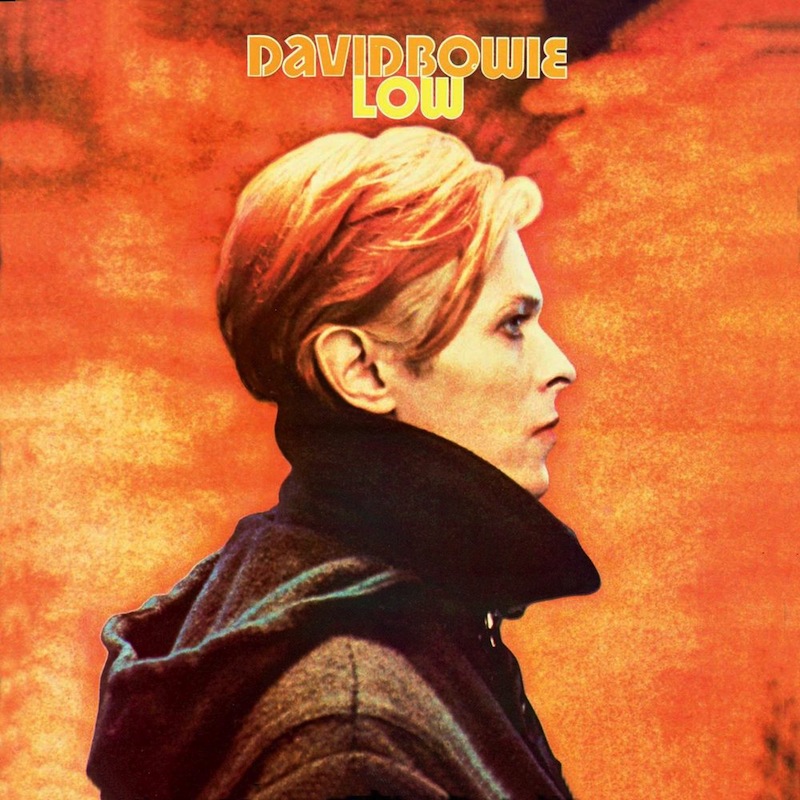
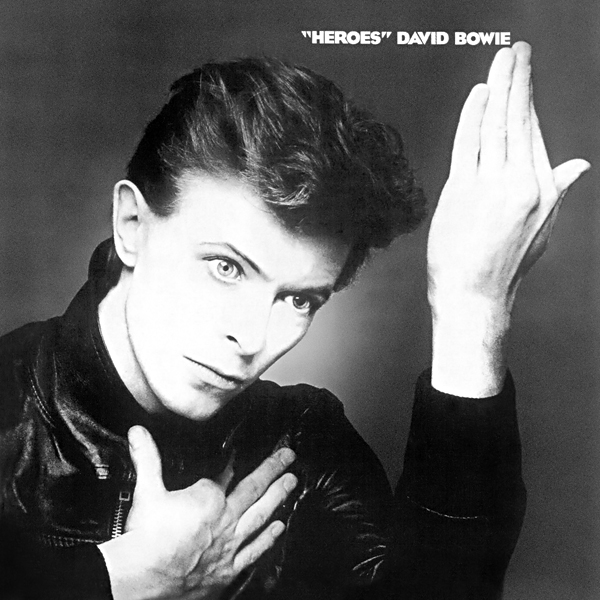

David Bowie – The Berlin Trilogy
Low (1977), “Heroes” (1977), Lodger (1979)
If we’re splitting hairs, David Bowie’s Berlin period actually comprises five albums, if you count the two he recorded with Iggy Pop: 1977’s The Idiot and Lust For Life. That’s four in one year for anyone who’s counting. Indeed, Bowie was on a hot streak when he temporarily relocated to Berlin in an effort to kick a cocaine habit and get himself back on track. In the three years of his residency, Bowie—along with Iggy, Brian Eno and Tony Visconti—delved into a period of incredible creativity, writing and recording three albums of progressively more accessible material. Low is an avant garde masterpiece, half comprising instrumental mood pieces and half featuring some of his weirdest and most wonderful rock songs. “Heroes” is somewhat more of a traditional pop album, though it too contains a handful of dark, ambient instrumentals, as well as the monumental title track—arguably his single greatest six minutes of music. And Lodger, though not as highly acclaimed as the other two, finds Bowie stretching his artistic muscles strictly in a pop song context, offering moments both anthemic and off-kilter. These three albums are connected by time, geography and personnel, but also by something more intangible. No other three albums in the Bowie catalog sound anything like the art-rock futurism here (except maybe Station to Station). – Jeff Terich
Listen/Buy: Spotify | Rough Trade (vinyl)

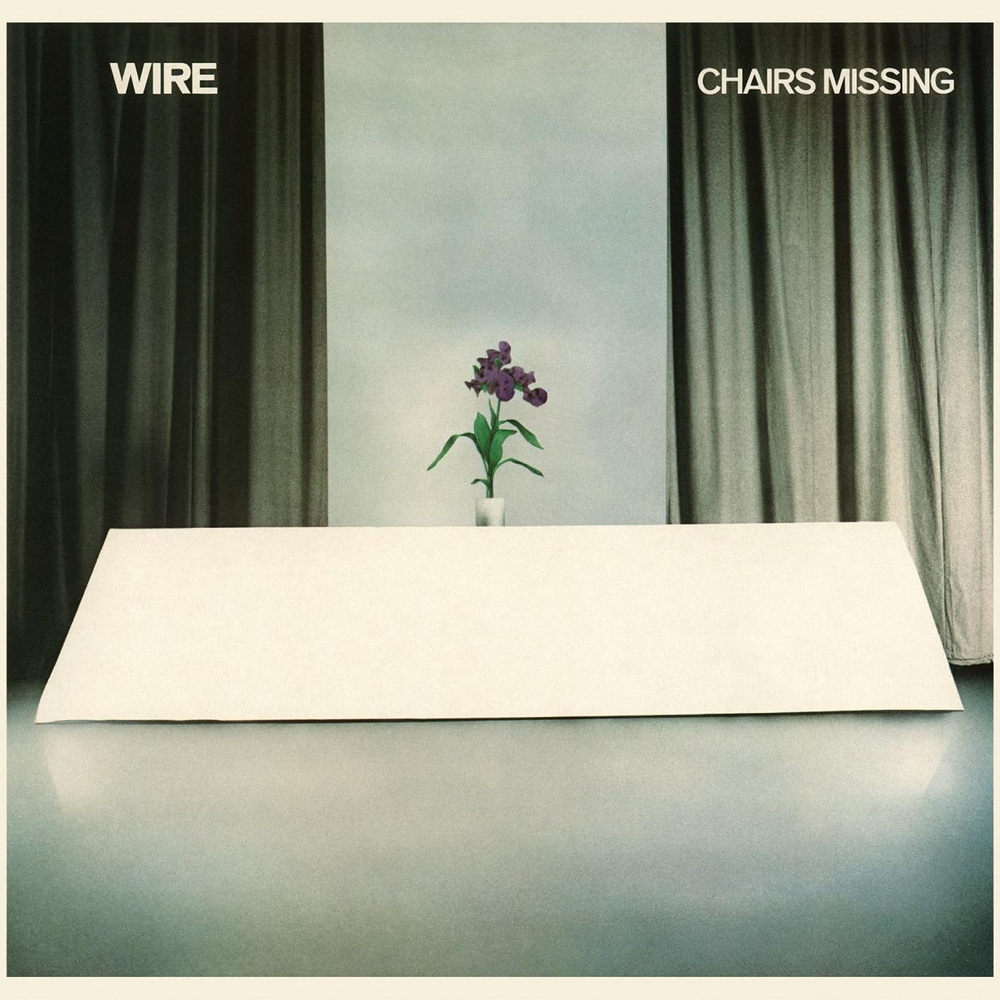
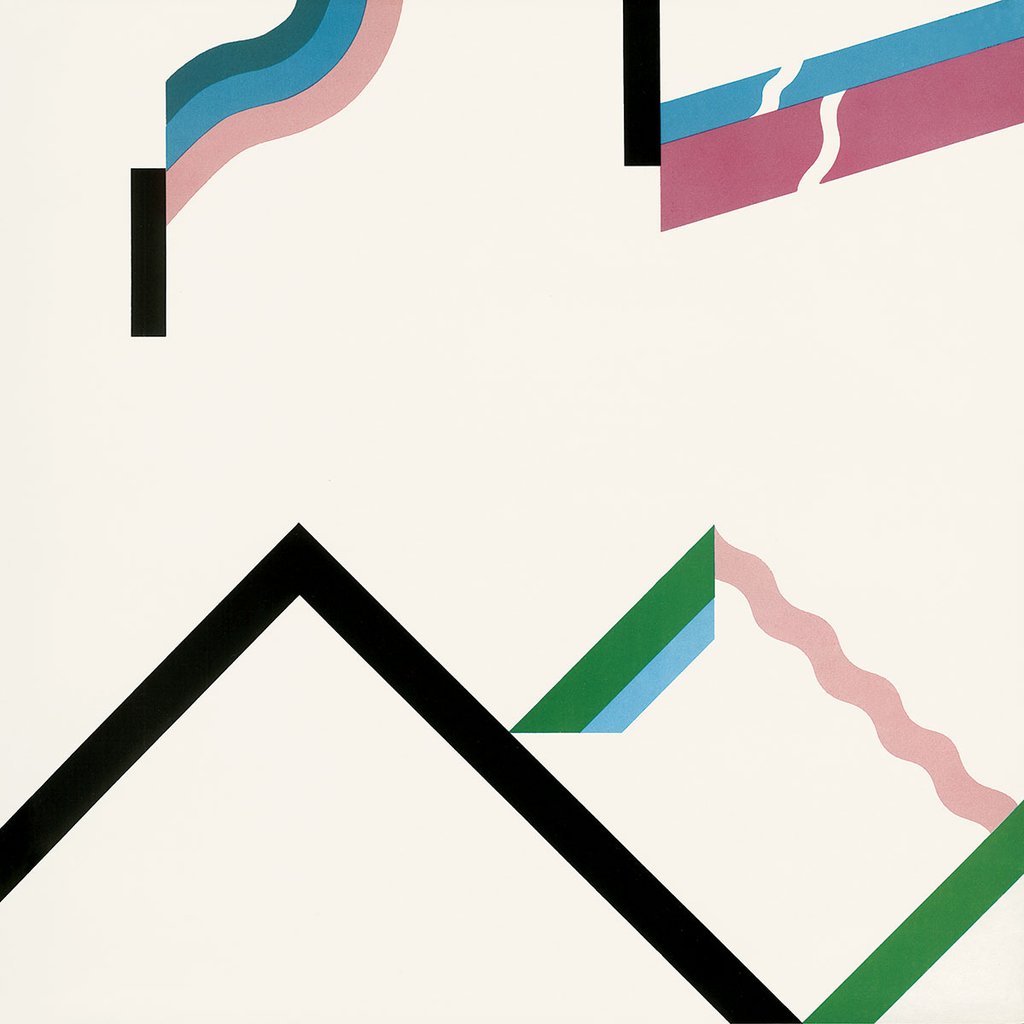
Wire – The First Three Albums
Pink Flag (1977), Chairs Missing (1978), 154 (1979)
In many situations that comprise a perfect album trilogy, the albums come in quick successions, released one per year in a three-year period. That’s how it went for Wire in the first three years of their existence. Their early output was like capturing lightning in a bottle, learning how to manipulate it and then ultimately shaping it into some grand, elegant form. Wire arguably had four separate periods of activity: Their early punk/post-punk years, their glossier ’80s period, the Read & Burn ’00s resurgence and the creative burst of the present day. Each one has their merits and highlights, but the first three albums of theirs were unstoppable, capturing a band evolving at a mind-blowing clip, going from the brief bursts of energy on Pink Flag to the dark post-punk artistry on Chairs Missing to the avant garde pop on 154. Each album is a perfect 10—as strong as argument as any for the best triple-album run by any band of the punk era. Or maybe anyone. – Jeff Terich
Listen/Buy: Spotify | Amazon (vinyl)
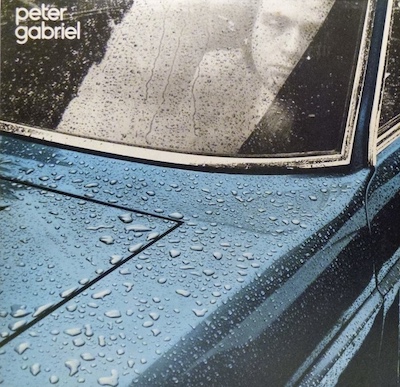


Peter Gabriel – Self-titled albums
Peter Gabriel (“1,” or “Car”) (1977), Peter Gabriel (“2,” or “Scratch”) (1978), Peter Gabriel (“3,” or “Melt”) (1980)
What began as a way to ease himself back into the music scene after nursing his wife and new daughter back to health quickly snowballed into the development of Peter Gabriel as a visionary artist apart from his old Genesis bandmates. Gabriel’s solo debut attempted to refocus his sprawling tendencies with assistance from contemporaries very much tied to those same tendencies (members of King Crimson, Alice Cooper/Pink Floyd producer Bob Ezrin). Even as it managed to suggest everything from barbershop quartet (“Excuse Me”) to New Orleans jazz (“Waiting for the Big One”), it delivered one timeless moment in the polished folk update “Solsbury Hill.” He followed that a year later with a decidedly even less commercial release. It contained pop songs to be sure, but they were difficult ones looking back to David Bowie (“A Wonderful Day in a One-Way World,” “Exposure”), looking over at Bruce Springsteen (“Mother of Violence,” “Home Sweet Home”), and looking forward to Prince (“DIY,” “Animal Magic”). But the third time was truly the charm, replacing any sense of bloat from #1 and malaise from #2 with tightly-coiled malice. Backed by an army of production wizards and performing friends, Gabriel nimbly and fearlessly stepped into thematic minefields: crime (“Family Snapshot,” “Intruder”), the body politic (“Games Without Frontiers,” “Biko”), mental illness (“No Self Control,” “Lead a Normal Life”). A string of hits and coulda-been-hits from start to finish, this third chapter blazed a trail for social consciousness in mainstream sonic storytelling. Including songs whose genius wouldn’t be revealed until further down the road (“Here Comes the Flood” on Shaking the Tree, “On the Air” on Plays Live), Peter Gabriel’s first three albums and four years (!) on his own didn’t just redefine him. They redefined rock, what it could say, and what it could mean. – Adam Blyweiss
Listen/Buy: Spotify | Amazon (vinyl)
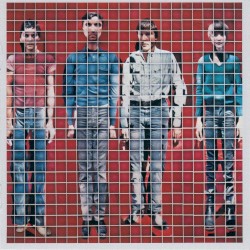

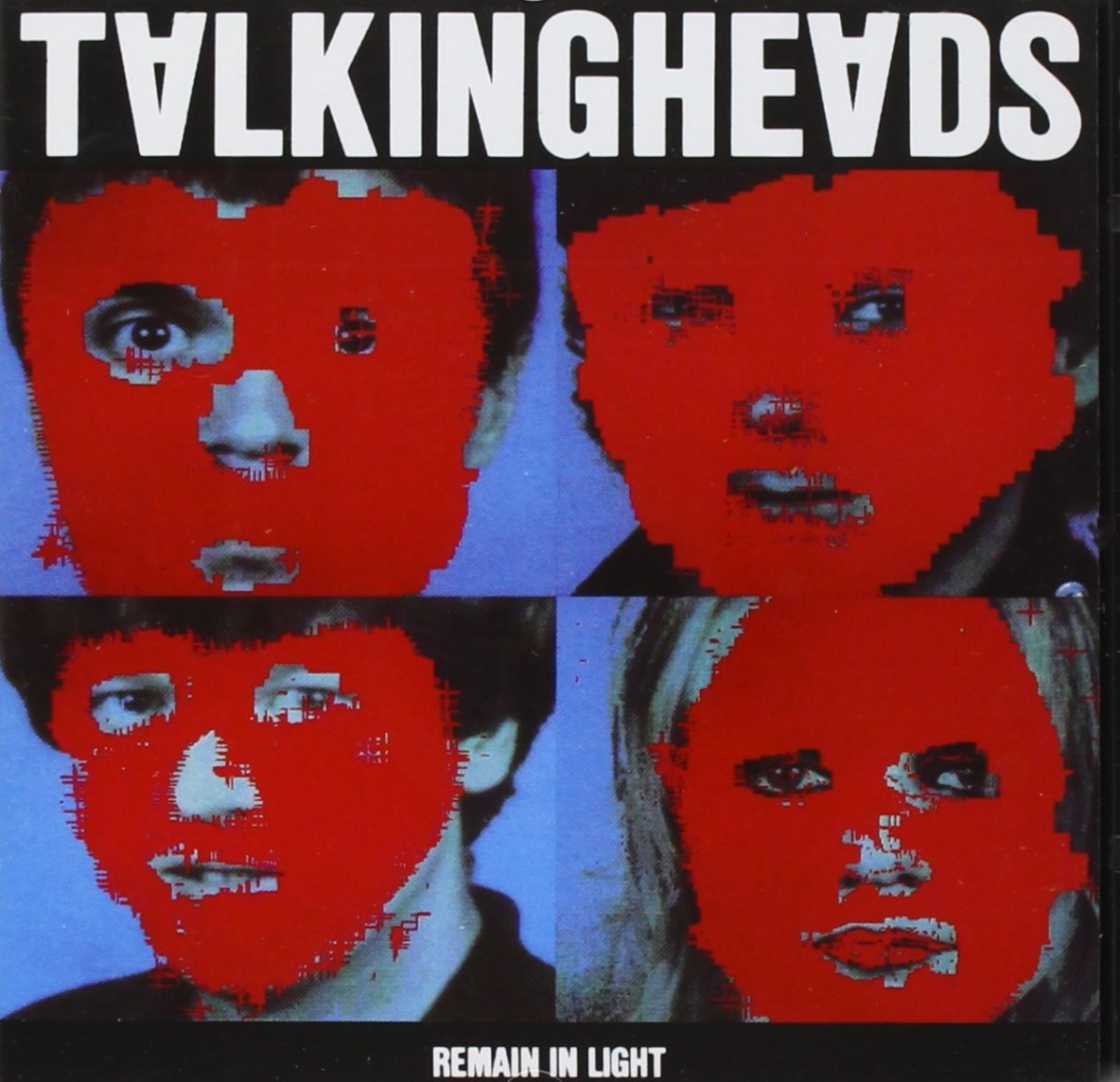
Talking Heads – Eno Trilogy
More Songs About Buildings and Food (1978), Fear of Music (1979), Remain in Light (1980)
Among the many standout works in Brian Eno’s career as a producer are three of the Talking Heads’ best albums. Following their more stripped-down debut with ‘77 and the full-blown funk maximalism of the group’s own self-produced Speaking In Tongues, the New York post-punk innovators worked with Eno on a series of records that found them accelerating rapidly in experimentation while becoming even stronger songwriters and musicians. More Songs About Buildings and Food found the group developing some sufficiently weird tendencies just a year after their debut, which congealed into even darker and more conceptual pieces with the denser, more ominous Fear of Music. By 1980’s Remain In Light, they achieved transcendence, incorporating polyrhythms, longer jam sessions and the influence of Afrobeat legend Fela Kuti. The group nearly came apart in the process—and relations have been frayed at best since their split in the early ‘90s—but the music is untouchable. – Jeff Terich
Listen/Buy: Spotify | Rough Trade (vinyl)



Exposure Trilogy
Peter Gabriel (“Scratch”) (1978), Exposure (1979), Sacred Songs (1980)
In the late ‘70s, following King Crimson’s hiatus, Robert Fripp envisioned a trilogy of albums whose aim “was to investigate the ‘pop song’ as a means of expression.” Those albums comprise his debut solo album, Exposure, along with Peter Gabriel’s sophomore self-titled album (“Scratch”), as well as Daryl Hall’s Sacred Songs. The rare album trilogy to feature music from separate artists (see also: the Black Ark Holy Trinity and Beatles solo debuts), the Exposure Trilogy nonetheless features Fripp at its core, having produced all three albums and performed on all three as well, while likewise featuring compositions and performances from Hall and Gabriel on his own solo LP. On paper, the more soul- and pop-minded Hall stands apart from the other two, whose background in prog make Gabriel and Fripp more alike than not, though Fripp’s production, guitar work and “Frippertronics” nonetheless give Hall’s solo debut an artful sense of abstraction in spite of its hook-forward songwriting. Whereas Gabriel’s sophomore LP is unsurprisingly, satisfyingly oblique—complete with his own version of “Exposure.” The connection between the three is more one of intent and vision rather than in any sort of narrative concept or specific sessions, but Fripp’s presence is enough to make that connection clear. – Jeff Terich
Listen/Buy: Spotify | Amazon (vinyl)


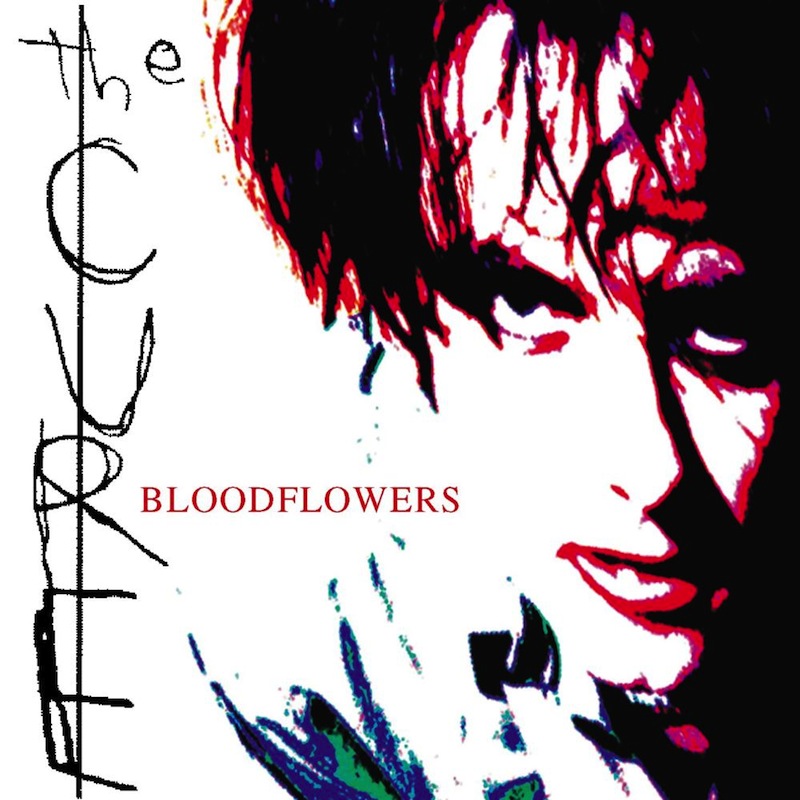
The Cure – The Trilogy
Pornography (1982), Disintegration (1989), Bloodflowers (2000)
The Cure arguably have more than one significant trilogy in their catalog. The first is their run of second through fourth albums, beginning with Seventeen Seconds and comprising their post-punk period (which is essential listening regardless of absence here). The other shares a common album: 1982’s Pornography. Essentially a keystone that holds together the group’s overarching catalog of gloom and angst, Pornography ultimately began a thread that ended up being wound throughout their catalog, its moody and intensely heavy songs connecting to the breathtaking majesty of their goth masterpiece, 1989’s Disintegration. The two albums are kindred spirits—one a portrait of a young man (Robert Smith) riddled with depression and self-loathing, the other a diary of that same man, growing up and faced with an early-mid-life crisis. Bloodflowers, however, arrived a little over a decade later to tie the three together with a contemporary update. It bears the darkness of the previous two albums though not necessarily as explicitly the despair. It’s the last truly ambitious Cure album, of a piece with their other two masterpieces (later released as a trio of live performances). Perhaps it’s not necessarily the perfect 10 the other two happen to be, but it was a striking restatement of purpose, and a continuation of a mood that The Cure have always worn well. – Jeff Terich
Listen/Buy: Spotify | Amazon (vinyl)

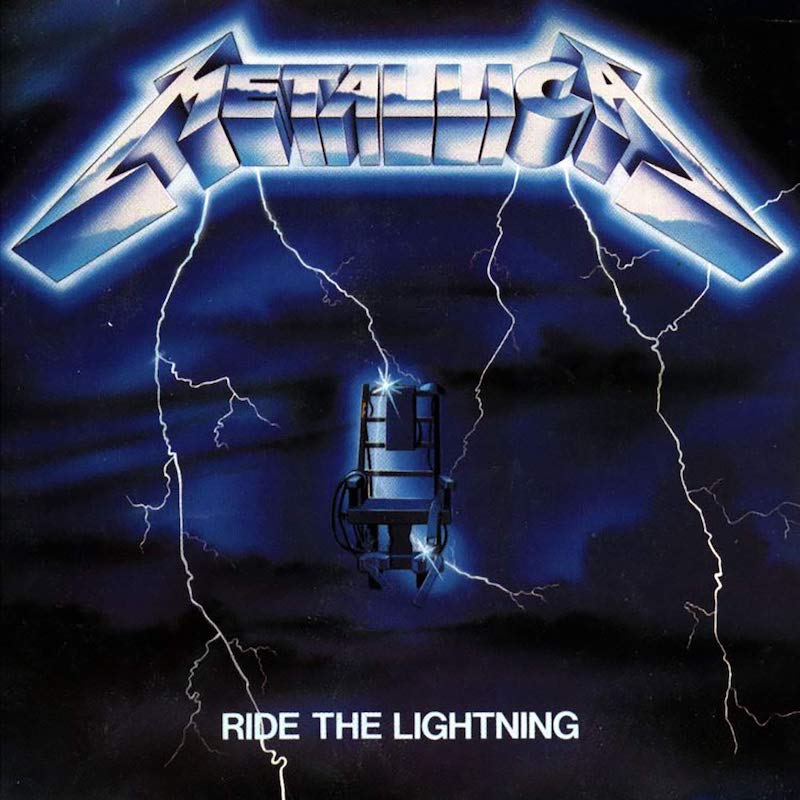
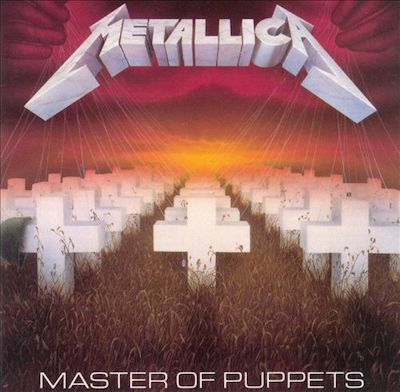
Metallica – The “Cliff Years” trilogy
Kill ‘Em All (1983), Ride the Lightning (1984), Master of Puppets (1986)
At Metallica’s live concert on March 5, 2017, they played 18 songs. Five were from their newest record, Hardwired…to Self Destruct, the album they are touring in support of. But seven were from their first three albums. Singles released: zero. Videos made: zero. But fans of all ages—even those born in the last 30 years—sing along, knowing all of the words. These three albums—Kill ‘Em All, Ride the Lightning and Master of Puppets—bottled the essence of Metallica—the youth, the energy, the grime, qualities present in the music as much as in the musicians. The late Cliff Burton added his innovative bass riffing to the mix of punk and metal that became thrash. The albums that followed had high and low points, but the band admits that their two most recent—arguably their two best since 1986—were written by revisiting the methods developed in these original three. – Chad Gorn
Listen/Buy: Spotify | Rough Trade (vinyl)
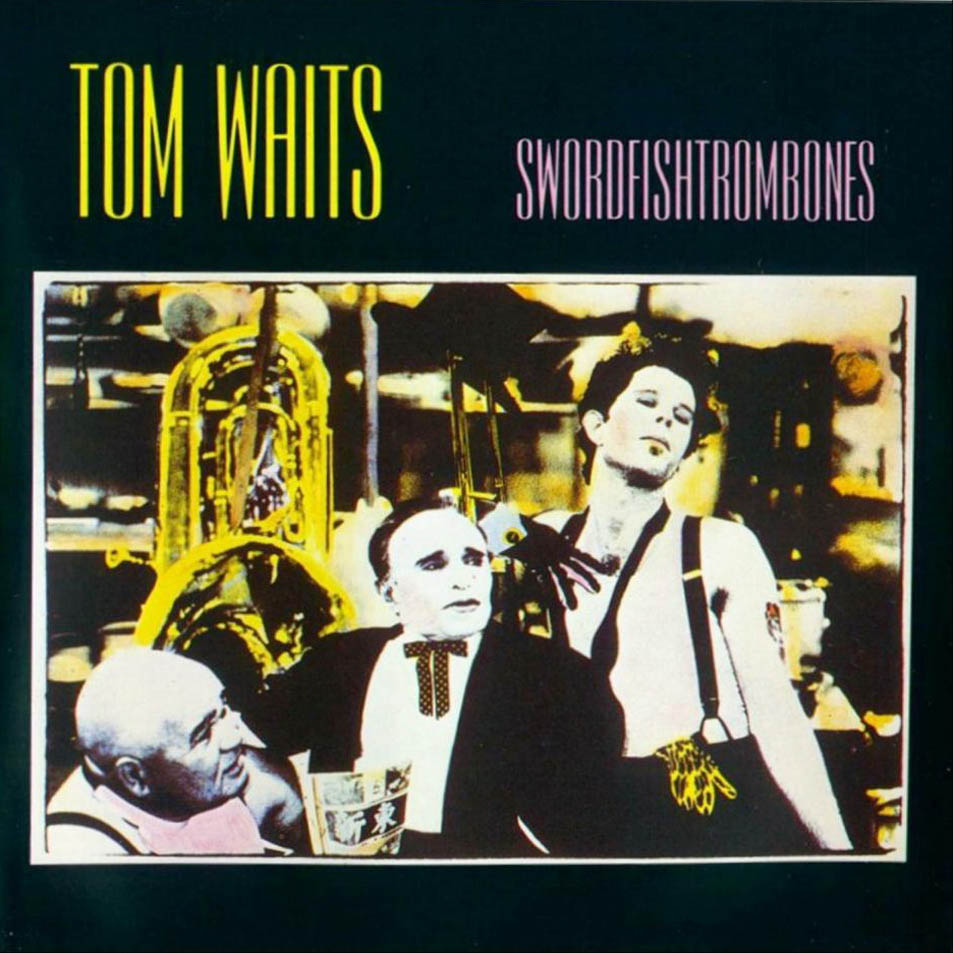

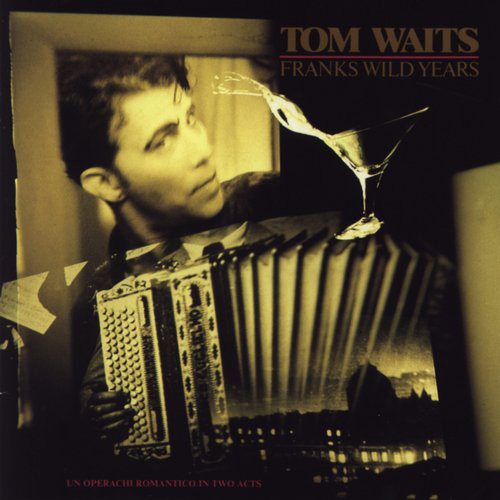
Tom Waits – The “Island Years” trilogy
Swordfishtrombones (1983), Rain Dogs (1985), Frank’s Wild Years (1987)
Locked into a digestible beatnik persona from the ‘70s until he scored Francis Ford Coppola’s notorious flop One From the Heart, Tom Waits made one of the most dramatic style changes in rock history in 1983. Waits’ marriage to Kathleen Brennan—kindled when she worked for Coppola’s production company Zoetrope—is often cited as the major impetus for Waits’ trajectory shift, and not just because Brennan reintroduced him to Captain Beefheart. Thirty years later, Waits’ first three albums under his radically redesigned method now sound like progressive steps that created more than a new foundation: It was a whole goddamn new building, with impressive new aluminum siding.
Swordfishtrombones introduced what would become Waits’ most recognizable palette. Forsaking the orchestrations and jazz trappings, the 1983 album was an obvious deconstruction that used broken percussion, rickety arrangements, and most notably Marc Ribot’s muted guitar twang to build an entirely frazzled framework. It was like Fellini’s Italian carnivals put to music, with stomps like “Underground” and “16 Shells From a Thirty-Ought Six” sidling next to more traditional songs like “In the Neighborhood” and “Johnsburg, Illinois.” The tentativeness of Swordfishtrombones was part of the plot, but Rain Dogs flashed total confidence in the new direction. “Clap Hands,” “Union Square” and “Jockey Full of Bourbon” were the real moments of liberation that Swordfishtrombones started to pry open, and gave weight to more conventional fare such as “Downtown Train” and “Time,” one of Waits’ most beautiful songs. Frank’s Wild Years brought the whole agenda back to the ground in the guise of a two-act opera. “Hang on St. Christopher” and “Temptation” pulsed with anticipation and danger, and Waits’ new employ of neglected keyboards such as the Optigan, the Mellotron and pump organ made “Innocent When You Dream” and “Yesterday Is Here” sound blown into the room by the wind. It’s also nice to think Waits was kicking his old identity in the teeth with the lounge parodies of “Straight to the Top (Vegas)” and “I’ll Take New York.” – Paul Pearson
Listen/Buy: Spotify | Rough Trade (vinyl)
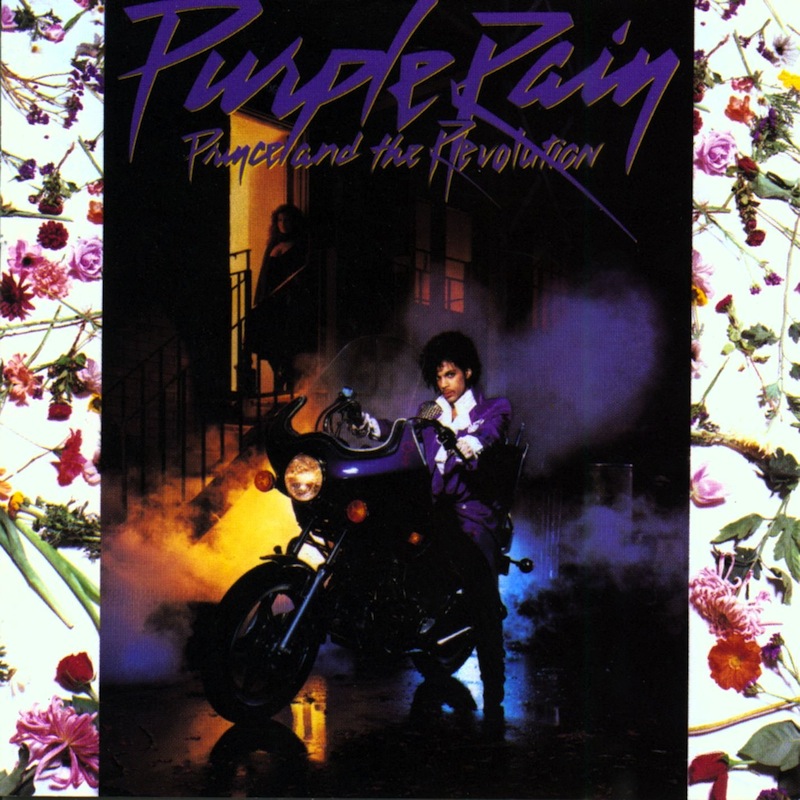

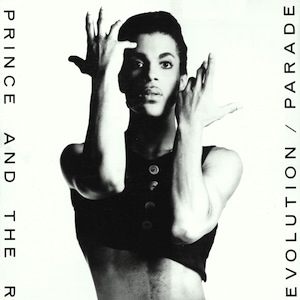
Prince – The Revolution Trilogy
Purple Rain (1984), Around the World in a Day (1985), Parade (1986)
Throughout his prolific career, Prince employed several backing bands, including The New Power Generation and, in the years before his passing in 2016, 3rdeyegirl. The Revolution, the band that featured on both the album and film Purple Rain, left the biggest impression of them all, even if their official run ended relatively early. Some permutations of the group existed as far back as the late ‘70s, including drummer Bobby Z and bassist Matt Fink, and the phrase “And the Revolution” is written backward on 1982’s 1999. But Prince and the Revolution wasn’t officially christened until 1984’s Purple Rain, after guitarist Wendy Melvoin joined the group, which kicked off a trilogy of albums that also included 1985’s psychedelic Around the World in a Day and 1986’s elaborate, theatrical Parade, the soundtrack to the film Under the Cherry Moon. They would have been credited on a fourth, had the Dream Factory project not been scrapped and reshuffled in part into 1987’s Sign ‘O’ the Times, which features performances from The Revolution. The group dissolved after just three albums, but what a hell of a three-album run they pulled off while it lasted. – Jeff Terich
Listen/Buy: Spotify | Amazon (vinyl)



Sonic Youth – Mid-’80s Trilogy
Bad Moon Rising (1985), EVOL (1986), Sister (1987)
Look carefully enough at Sonic Youth’s body of work and you’ll find blocks of records that feel connected in one way or another—their early ‘90s alternative rock trio, their mid-’00s embrace of hazy melodicism, and so on. Most fans will point to an ‘80s trifecta as their peak, beginning with 1986’s EVOL and ending with Daydream Nation, the band’s first three albums with drummer Steve Shelley and their final three before making the leap to a major label. But a couple years back I devised my own theory, that, beginning with Bad Moon Rising, they began “a masterful trilogy of albums informed by the myth of America as well as being haunted by its shadow.” With Bad Moon Rising the group began to ease out of the atonal drones of no wave and embraced a kind of menacing form of post-punk, which evolved into some of their greatest if still sufficiently weird and experimental songwriting on EVOL and Sister. Tying them together is an undercurrent of uniquely American mythos, frequently nodding to the Manson family and occasionally juxtaposed with the image of Madonna. – Jeff Terich
Listen/Buy: Spotify | Rough Trade (vinyl)
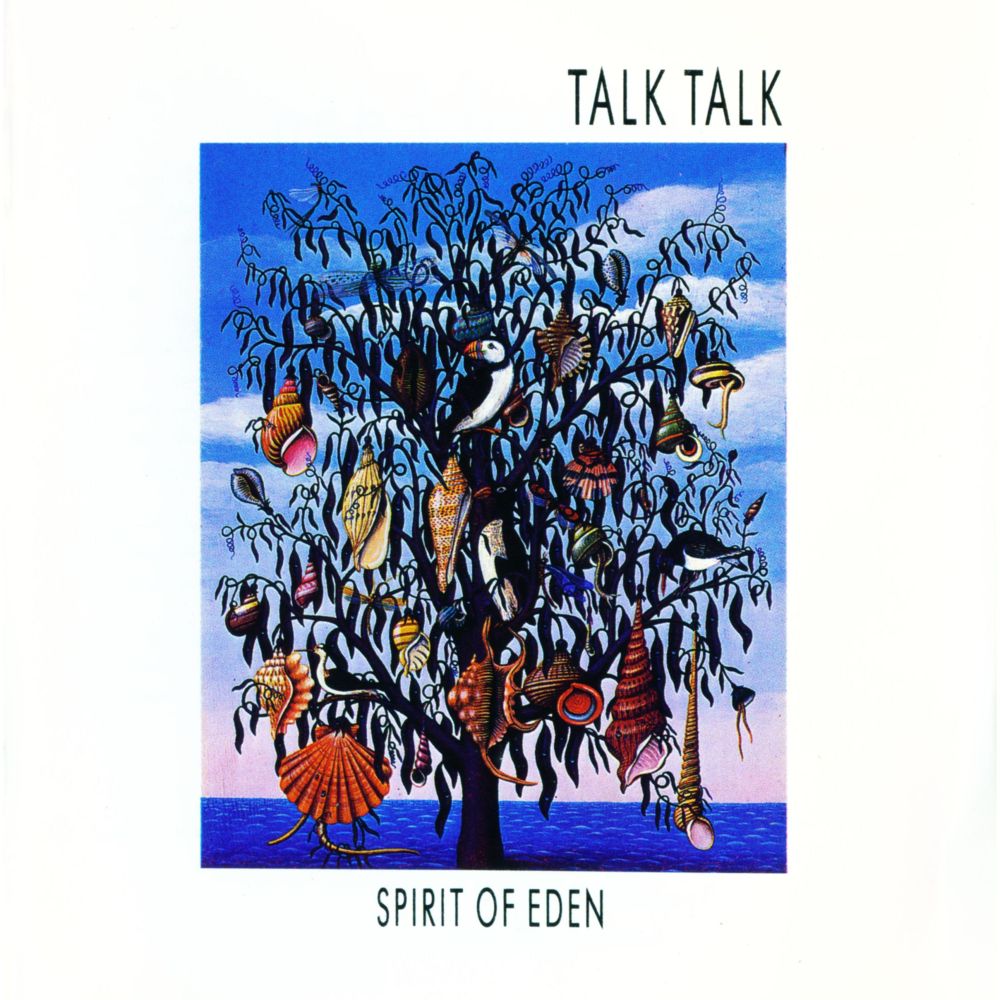

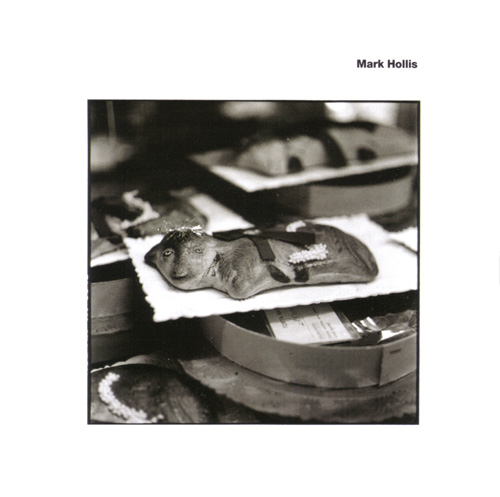
Mark Hollis Trilogy
Spirit of Eden (1988), Laughing Stock (1991), Mark Hollis (1998)
The career arc of Talk Talk is a well-worn topic but one that never fails to fascinate, beginning as New Romantic synth-pop and ending with ostensibly the creation of an entirely new genre. It didn’t happen overnight; with each record, the London group took a step forward into bolder forms of artistry, and with 1986’s The Colour of Spring, they seemed to indicate the makings of a transformation. With 1988’s Spirit of Eden, that transformation was all but complete, its final product culled from lengthy sessions of improvisation recorded in darkness, edited down into a piece that suggested a new path forward for rock music (or if you will, “post-rock”). Their final album, 1991’s Laughing Stock, refined and made even more delicate that loose, jazz-like approach, arriving upon some of the most beautiful material they had ever created. Yet while the group officially dissolved thereafter, vocalist/bandleader Mark Hollis continued these explorations with the release of his one and only solo album in 1998, delivering one final piece of his visionary puzzle that only seemed to deepen the mystery. – Jeff Terich
Listen/Buy: Spotify | Rough Trade (vinyl)


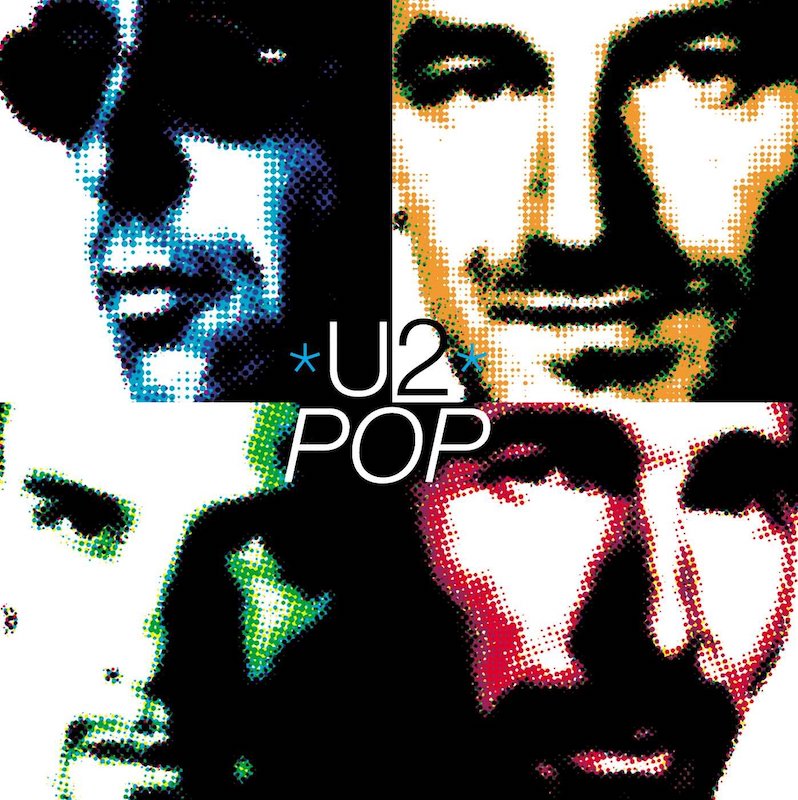
U2 – The ’90s
Achtung Baby (1991), Zooropa (1993), POP (1997)
After becoming one of the biggest bands in the world during their ascent in the ‘80s, U2 fully embraced their weirder and more experimental side in the ‘90s. The release of 1991’s Achtung Baby found the group taking influence from industrial and electronic music even while perfecting their rock anthems—and delivering some of their most haunting material via songs such as “Acrobat” and “Love Is Blindness.” Two years later, however, they doubled down on those leftfield influences, turning out their most satisfyingly weird material with Zooropa, an album that juxtaposes disco (“Lemon”) against industrial pop (“Daddy’s Gonna Pay for Your Crashed Car”), and even features Johnny Cash on lead vocals on closer “The Wanderer.” Completing the trilogy is Pop, an album equally steeped in electronic sounds but more overtly commercial in its presentation, fulfilling a conceptual transformation of sorts before the band returned to a more traditional rock sound on All That You Can’t Leave Behind. A more iconoclastic fan might be inclined to swap Pop for Original Soundtracks 1, their sole ambient pop album as Passengers (with Brian Eno), but regardless, the ‘90s-era slate of releases from the band showcases a group willing to use their massive platform to fuck with the formula. – Jeff Terich
Listen/Buy: Spotify | Rough Trade (vinyl)



Blur – “Life Trilogy”
Modern Life is Rubbish (1993), Parklife (1994), The Great Escape (1995)
If Blur ultimately lost the battle to Oasis stateside (which, in terms of record sales, seems to bear out) it might have been something lost in the translation. The band’s second, third and fourth albums were dubbed the “Life” trilogy as a result of their frequent references to British life and, in two out of three, the word “life” in the title. They’re also three of the band’s best records, a sharp turn away from the already cooling baggy grooves of debut album Leisure and an embrace of a much stronger songwriting approach. On Modern Life Is Rubbish, the group infused massive hooks into arrangements that nodded to punk and shoegaze, while Parklife expanded their repertoire with horns, piano and electronic sounds, and The Great Escape found them even channeling their own inner Bacharach on “The Universal.” The thing about the Blur vs. Oasis war, however, is that in terms of artistic ambition, it was never really a contest—that Blur released three masterpieces in three years and just kept on releasing more was proof of their unstoppable talent, slightly cooler American reception at the time be damned. The melodies, however, are…well, universal. – Jeff Terich
Listen/Buy: Spotify | Rough Trade (vinyl)


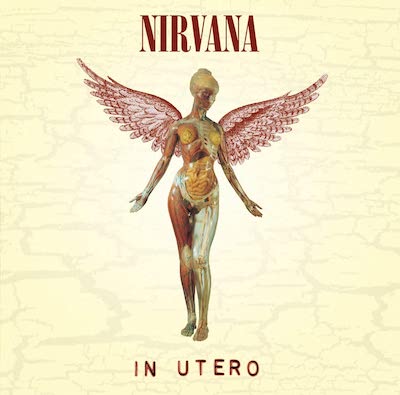
Nirvana – Discography
Bleach (1989), Nevermind (1991), In Utero (1993)
If you aren’t aware of the significance of Nirvava’s trilogy of studio albums by this point in time, there’s little I could say that would convince you of their importance. It’s not hyperbole to suggest that Nirvana’s trilogy acted more as a blueprint for not just the music of the ’90s, but helped shape the course of music itself. From the snarling rage of Bleach, to the hook-laden, sugary harmonic discipline of Nevermind, to the screeching, squealing, noise-marked landscapes of In Utero, the dynamics and quality of songwriting throughout the trilogy were peerless at their time, and in many ways, still are. Often imitated, yet never successfully so, Nirvana’s trilogy stands the test of time. – Brian Roesler
Listen/Buy: Spotify | Rough Trade (vinyl)



D’Angelo – Complete Discography
Brown Sugar (1995), Voodoo (2000), Black Messiah (2014)
D’Angelo is an elusive artist. In 29 years, he’s released only three albums, with the gaps growing larger with each successive release—his most recent effort arrived 14 years after its predecessor (and that was nine years ago). But if the Richmond soul icon isn’t necessarily prolific, he’s more than made each of those albums count. In 1995, D’Angelo helped to put neo-soul on the map with his acclaimed debut Brown Sugar, its title track becoming an R&B radio staple. With its follow-up, 2000’s Voodoo, he raised the bar with a looser, grimier soul masterpiece heavily inspired by Sly and the Family Stone, Fela Kuti, Al Green and Funkadelic. He retreated from the public eye after its touring cycle, working on and off on its follow-up, which became mythic before its eventual materialization in 2014. And with Black Messiah, D’Angelo made his ceremonious return with a funky and fiery set of protest anthems and love songs. He’s been relatively quiet since, but just this year appeared on The Book of Clarence soundtrack. Whether that means this trilogy becomes a quartet anytime soon, however, is anyone’s guess. – Jeff Terich
Listen/Buy: Spotify | Amazon (vinyl)

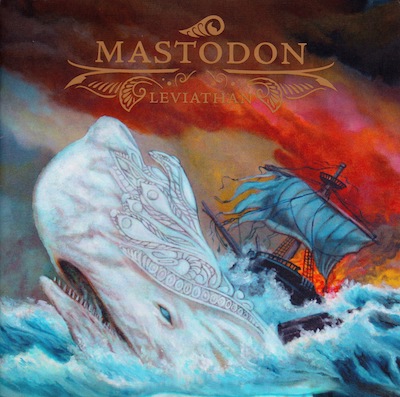
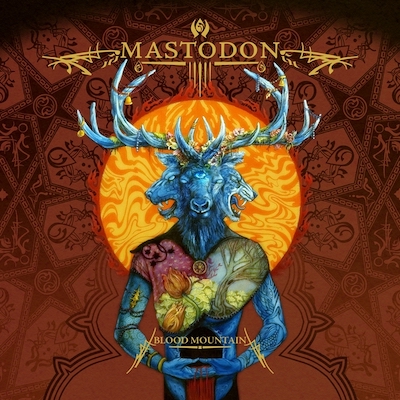
Mastodon – Elements trilogy
Remission (2002), Leviathan (2004), Blood Mountain (2006)
The Atlanta metal titans’ early albums have been known for their narrative-driven fashion. Leviathan was a musical homage to Herman Melville’s classic novel, Moby Dick. Blood Mountain followed the story of an explorer searching for a crystal skull to unlock the next stage of evolution. Yet, there is a common thread between these two albums and their 2000 debut album, Remission. Mastodon tied these albums together through the use of the classical elements. Remission, forged in fire, Leviathan, submerged in water, and Blood Mountain, buried within earth. Interestingly enough, while these albums were thematically linked, this succession of music wonderfully conveyed the progression of Mastodon’s sound. Their relatively brief days as a punishing sludge band to their more recent progressive, mainstream brilliance all on vivid display from 2000 to 2006. – Cody Davis
Listen/Buy: Spotify | Amazon (vinyl)
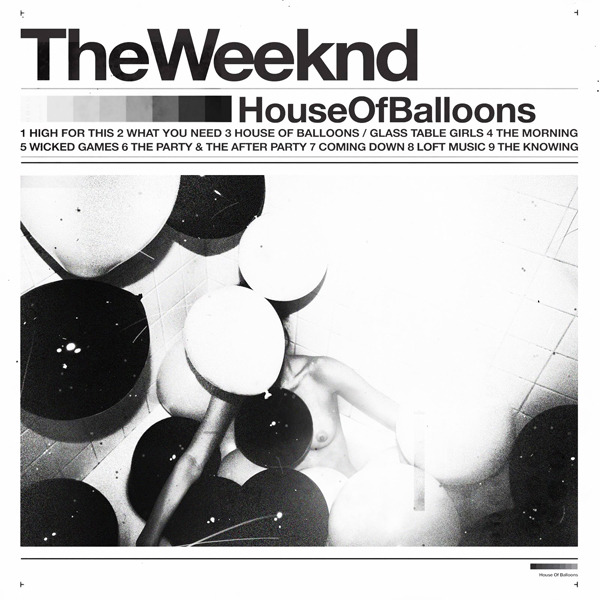
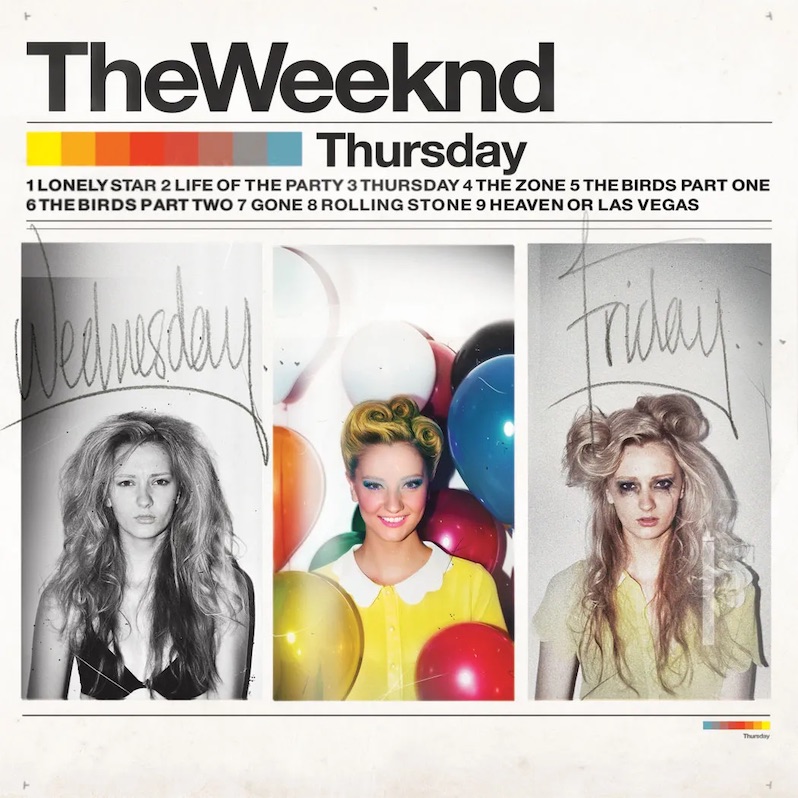
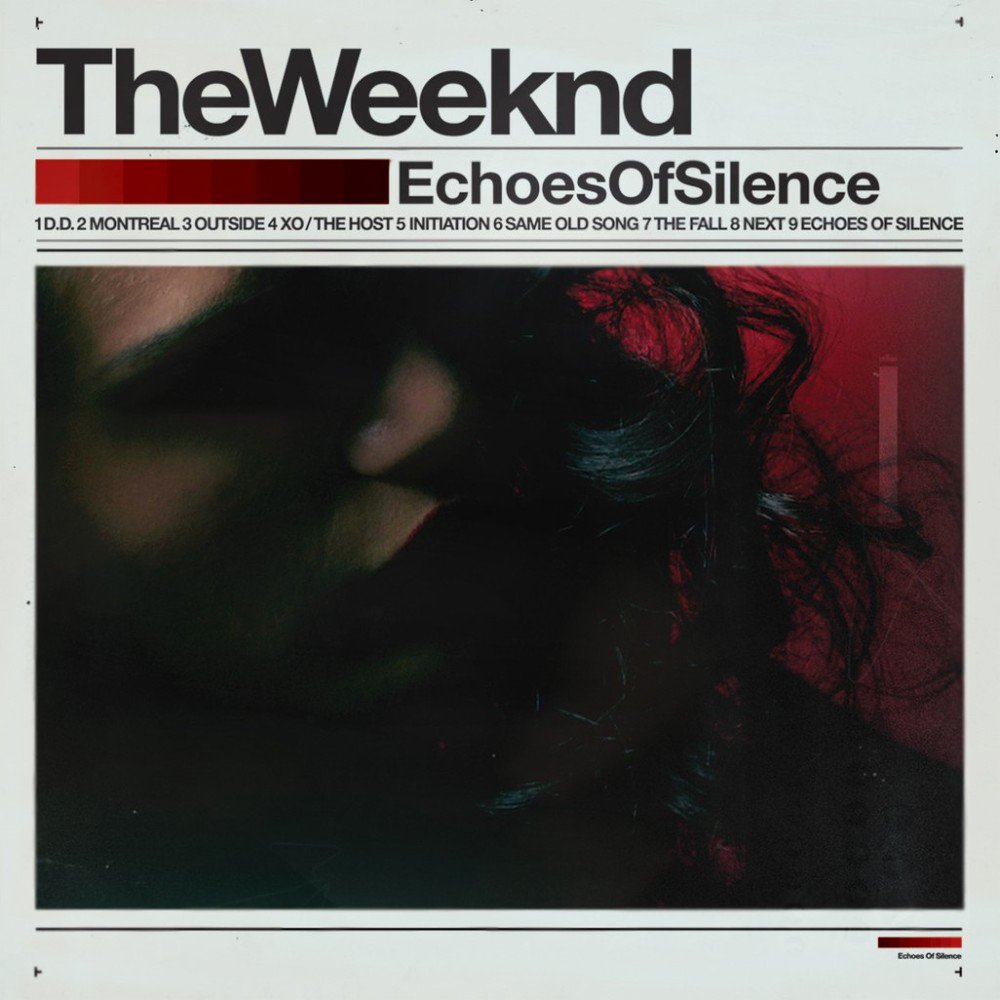
The Weeknd – Trilogy
House of Balloons (2011), Thursday (2011), Echoes of Silence (2011)
Before Abel Tesfaye was collaborating with Daft Punk and reportedly dating Selena Gomez, he was a dark and enigmatic R&B artist discovered by Drake. Tesfaye, known as The Weeknd, released a trilogy of mixtapes between March and December of 2011: House of Balloons, Thursday, and Echoes of Silence each packed nine drug and sex-fueled songs that gained mainstream notoriety. His eclectic crooning was shrouded in mystery. His music sampled very atypical sources; see: “The Knowing” (from House of Balloons) which used “Cherry Coloured Funk” by Cocteau Twins. There were also features from Drake and Juicy J on Thursday and Echoes of Silence, respectively. By 2012, Republic Records picked up his first three mixtapes and combined into a compilation album, named Trilogy. Since its release, the album has gone double-platinum and still stands as Tesfaye’s greatest work. – Cody Davis
Listen/Buy: Spotify | Amazon (vinyl)

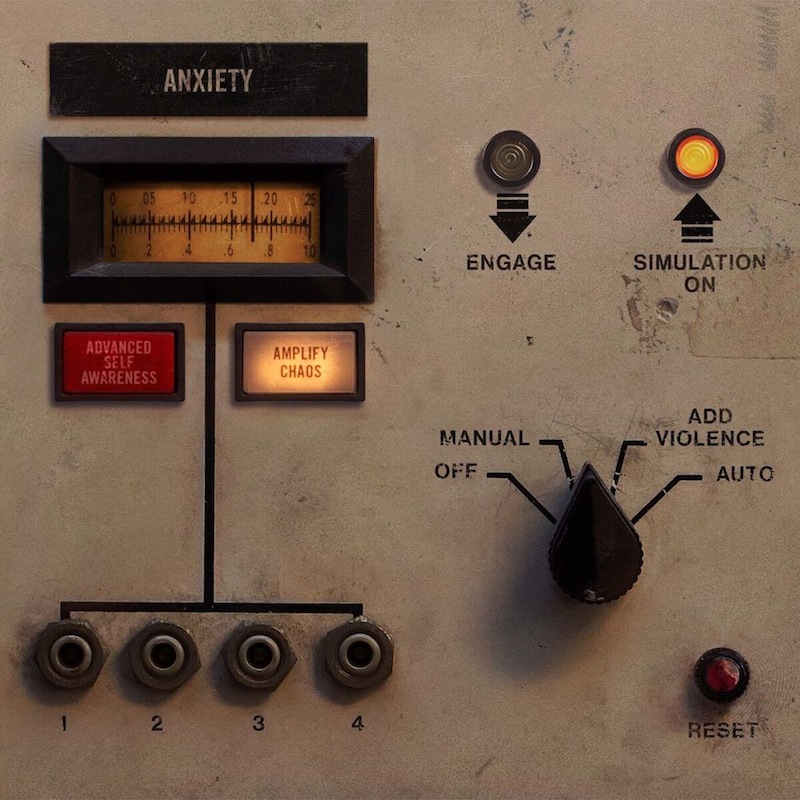

Nine Inch Nails – The Trilogy
Not the Actual Events (2016), Add Violence (2017), Bad Witch (2018)
Up through 2013’s Hesitation Marks, Nine Inch Nails has featured only one permanent member: Trent Reznor. Collaborators and live performers have evolved and cycled in and out over the years, but as a studio project it’s always been driven by Reznor’s own elaborate vision. In 2016, however, Reznor’s film composition partner, Atticus Ross, joined the project full time, and that same year took part in a trio of records each thematically tied and planned as an interconnected whole. Simply called “The Trilogy” by fans, it kicks off with the nihilistic menace of 2016’s Not the Actual Events, cycles back toward industrial-rock immediacy with the following year’s Add Violence, and concludes with the more atmospheric, experimental and sax-heavy sounds of Bad Witch. The latter is a somewhat unsettling and bleak end to what’s a broad conceptual thread about the nature of the universe and our ostensibly lonely place within it. But where it offers little comfort in its conceptual vision, it’s musically one of Nine Inch Nails’ boldest and most inspiring releases in years, a suggestion that whatever might be drawing Reznor away from the project for the moment, the potential for exploration remains as high as ever. – Jeff Terich
Listen/Buy: Spotify | Amazon (vinyl)
Treble is supported by its patrons. Become a member of our Patreon, get access to subscriber benefits, and help an independent media outlet continue delivering articles like these.



Good list. Me personally? Would replace Nirvana with the Melvin’s’ Ipecac debut trilogy. Not only was it a real trilogy, it showed all personalities of the band
Got another trilogy of trilogies to add here
Stooges – S/T, Funhouse, Raw Power
Nick Drake – Five Leaves Left, Bryter Lyter, Pink Moon
Big Star – #1 Record, Radio City, 3rd/Sister Lover
Oh shit, and I almost forgot the trilogy of all trilogies, which I’m baffled by its omission: Dylan’s electric trilogy (Bringing It All Back Home, Highway 61 Revisited, Blonde On Blonde)
The best trilogy is the College Trilogy by Kanye West. The College Dropout, Late Registration and Graduation
Swans just finished up an excellent trilogy last year. The Seer, To Be Kind, and The Glowing Man. All 2 hour monsters
What about the West Coast Pop Art Experimental Band’s trilogy?
Part One (1967)
Vol. 2 (Breaking Through) (1967)
Volume 3: A Child’s Guide to Good and Evil (1968)
I think this was the first time a band ever did the album trilogy format
Very cool! I don’t think this came up during our planning phase for this list, but it’s a worthy inclusion for sure.
Like the list but you forgot eminem man, shady LP Mathers LP and eminem show
Marilyn Manson’s Antichrist Trilogy
1) Antichrist Superstar 1996
2) Mechanical Animals 1998
3) Holywood 2001
Neurosis
Souls at Zero
Enemy of the Sun
Through Silver in Blood